#produced by jan de bont
Text


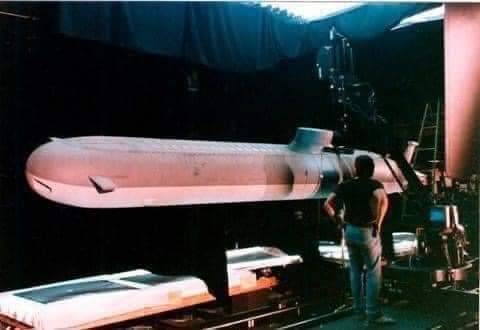


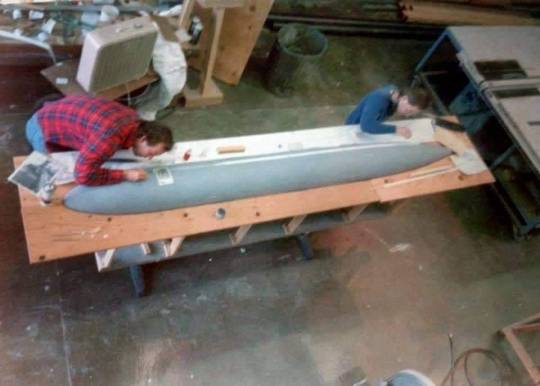
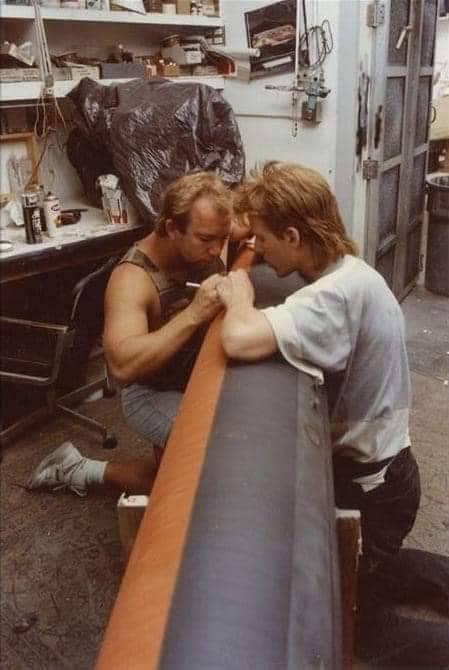


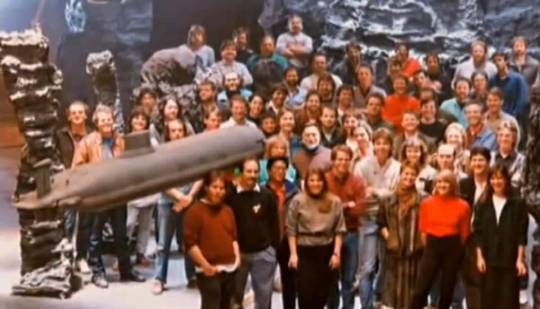
On this date in 1990 “The Hunt For Red October” was released!
Capt. Borodin: “The crew know about the saboteur. They are afraid.”
Marko Ramius: “Well, that could be useful when the time comes.”
Director:John McTiernan
1st AD:Jerry Ballew
Cinematographer:Jan de Bont
Camera operator:Roger Gebhard
1st AC:Cal Roberts
Production Designer:Terence Marsh
Gaffer:Ed Ayer
Key grip:Larry J. Aube
Dolly grip: Michael J. Coo
This is one of my favorite movies so today we’re going on a deep Dive! Dive! Dive! on how this group of dedicated filmmakers brought this movie to life.
The producers originally wanted Kevin Costner for the lead, but Costner had other ideas.
As producer Mace Neufeld explained in a behind-the-scenes DVD feature, "I'd gotten quite friendly with Kevin Costner, and I went to Kevin about playing Jack Ryan. But Kevin was up to his neck, and very enthusiastic, about doing this ... this buffalo movie. And I said, 'You'd rather do a buffalo movie?'".
This was Alec Baldwin’s first big budget starring role throwing himself face first into the role spending time with C.I.A agents and spending the night 600’ underwater in a submarine. He also recommended he personally do the helicopter drop into the ocean. Baldwin accepted the role of Jack Ryan because Harrison Ford turned it down. Cast member Sam Neill also benefited from Ford's refusal three years later by being cast in the lead role of Jurassic Park (1993). Interestingly, Baldwin asked for a big pay increase for the sequel, to which the producers allegedly replied, "For that price, we could get Harrison Ford." Baldwin held his ground and the studio agreed to the fee, but for Ford instead of Baldwin for “clear and present danger”
Sean Connery was a last-minute replacement. The film had been in production for two weeks when word came that Klaus Maria Brandauer (Out of Africa), the Austrian actor who'd been signed to play the rogue Soviet sub commander Marko Ramius, couldn't do it after all because of a prior commitment. Connery took the part instead, needing only one day for rehearsal. Coincidentally, he and Brandauer had acted together in 1983's “Never Say Never Again” and would reunite again for 1990's “The Russia House”, which was shot shortly after The Hunt for Red October.
Mancuso: The hard part about playing chicken is knowin' when to flinch.
"I had reservations about it," Connery told an Associated Press reporter upon the film's release. "I thought this kind of Cold War intrigue might be dated because of recent events(the fall of the U.S.S.R). It turned out that the studio had failed to fax the first page of the script, which explained that it took place before Gorbachev." This is probably why no one ever uses fax machines anymore. After being faxed the script, Sir Sean Connery initially turned the role down on the basis of the plot being unrealistic for the post-Cold War era. Whoever sent the fax neglected to include the foreword, explaining the movie as historical. Once he received the foreword, Connery accepted the role.
After consulting with the hair department behind director John McTiernan's back, Sir Sean Connery arrived on-set for his first day of principal photography with his hairpiece incorporating a ponytail. Several years later, once Connery's potential influence had greatly waned, McTiernan stated in an interview with Sight & Sound Magazine that he was "f---ing livid" with Connery, and that the Scottish actor tried to use his considerable heft with the studio, going over the director's head to pass the alteration with producers. It seemed as though Connery was to get his way until midway through the second day's shooting, when director of photography Jan De Bont started laughing while reviewing the dailies, remarking to Connery that his ponytail looked like "a limp, swinging d--k." This soon became a meme among the crew, and by the end of the second day, Connery was so upset at the mockery, he relented, having the hair department remove the alteration and forcing the re-shoot of a key scene. McTiernan joked that the reported cost of the hairpiece, approximately $20,000, was mainly down to the cost of those subsequent re-shoots.
Jeffrey Pelt: “Listen, I'm a politician, which means I'm a cheat and a liar, and when I'm not kissing babies, I'm stealing their lollipops, but it also means that I keep my options open.”
Screenwriter Larry Ferguson played the role of C.O.B. [Chief (Petty Officer) of the Boat] on the U.S.S. Dallas. He didn’t know he had been cast till he saw his name on the cast list and quickly hired an acting coach having not acted in over 16 years, he quickly started rewrites giving his character more screen time.
The film got an uncredited rewrite—including all of the Russian dialogue—from veteran filmmaker John Milius. The writer of “Apocalypse Now”, and director of “Conan the Barbarian”, and “Red Dawn”—who had directed Connery in 1975's “The Wind and the Lion”—told an interviewer in 2003 that the rumors of his involvement with The Hunt for Red October were true. He said he added speeches for Connery's character ("Make it about me," the actor supposedly told him), and that he "wrote all of the Russian stuff—everything that's Russian in that movie."
In one of the most clever ways I’ve seen a movie ditch the subtitles, this film begins with the actors speaking Russian with English subtitles. As the camera slowly dollies to the mouth of actor Peter Firth he casually switches in mid-sentence from Russian to English on the word "Armageddon", which is the same spoken word in both languages. After that point, the Soviets' dialogue is communicated in English.
During filming, several of the actors portraying U.S.S. Dallas crewmen took a cruise off the coast of San Diego on the USS Salt Lake City (SSN-716) a real Los Angeles-class submarine. To train for his role as the Dallas' commander, Scott Glenn. The real commander Thomas Fargo of the Salt Lake City ordered his crew to treat Glenn as equal rank, first giving reports to him, then give the same report to Glenn. Glenn based his performance of Mancuso on Commander Fargo, giving orders in a calm even voice, even in tense situations, saying "whatever good happened in the performance, basically I owe to now Admiral Fargo, thank you sir."
Made before sophisticated CGI became the norm in filmmaking, the film's opening sequence featured a long pull-out reveal of the immense titular Typhoon-class sub. It included a nearly full-scale, above-the-water-line mockup of the sub, constructed from two barges welded together. Since they didn’t have permission to go out to open ocean they were forced to shoot in Long Beach harbor to create the wake of the open ocean they had boats circling the barge to create waves.
Production designer Terence Marsh and Cinematographer Jan de Bont didn’t want to confuse the audience so they gave each country's submarine its own background color: Soviet submarines, such as Red October and V.K. Konovalov, had interiors in black with chrome trim. American ships, such as Dallas and Enterprise, had grey interiors. To help the audience quickly grasp which sub's interior they were seeing as the movie jumped from scene to scene and sub to sub, the filmmakers also created a subtle lighting scheme: blue for Red October, green for the Alfa class "V.K. Konovalov", and red for Dallas.
During filming in 1989, the U.S.S. Houston, which doubled for the U.S.S. Dallas in the movie, snagged the tow cable between the commercial tugboat Barcona and a barge, sinking the tugboat ten miles off Long Beach, California. One crewman unfortunately drowned, and two more were rescued.
On stage for the sub interiors two 50-square-foot (4.6 m2) platforms housing mock-ups of Red October and Dallas were built, standing on hydraulic gimbals that simulated the sub's movements. Connery recalled, "It was very claustrophobic. There were 62 people in a very confined space, 45 feet above the stage floor. It got very hot on the sets, and I'm also prone to sea sickness. The set would tilt to 45 degrees.
I asked the Dollygrip on the film and crew stories member Micheal Coo about his experience on the and he shared this with us.
“ I’ve got a story for you...
We were shooting in a real submarine and doing a tracking shot down a long corridor. Now about every 15 feet is a bulkhead that you have to step over and make sure you don’t hit your head on the top. We are tracking on a peewee dolly, raised up on track to clear the bulkheads, chasing Sean Connery down the corridor. While chasing Sean, Jan Debont yells cut cut cut, and stands up. There’s no way I could stop on a dime and Jan stood up right before one of the bulkheads. He hit his head so hard he flew over the top of me and I went under him with the dolly. His head sounded like a church bell ringing in the submarine. Since Jan Debont and Sean Connery didn’t get a long so well Sean laughed his ass off at Jan laying there on the floor saying “Fucking Hell Shit Michael, I said cut!!!”
The miniature “underwater” scenes were shot and built by I.L.M and the talented model makers from BOSS films Gregory Jein, John Eaves, Ron Gress and Alan McFarland, they filmed using smoke to simulate underwater with a model sub connected to a 12 cable marionette style frame, giving precise, smooth control for turns the same technique was used for the robot aliens in the film “Batteries not included”. To get the lens to “scrape the paint” of the model to make it feel life sized the crew used mirrors lined up perfectly and the camera lens shoot into the mirror getting the image much closer then it would have been possible for the camera. With Computer generated effects, in their infancy, cgi was used for creating bubbles and other effects such as particulates in the water.
Navy recruiters set up booths in some theater lobbies for people to sign up to join the service, or to at least look into it. The Pentagon hoped that this movie would do for the submarine service what Top Gun (1986) did for Naval aviation.
When the movie was first released on VHS in 1991, the tapes were red.
Capt. Marko Ramius: I'm reminded of the heady days of Sputnik and Yuri Gagarin when the world trembled at the sound of our rockets. They will tremble again at the sound of our silence. The order is engage the silent drive.
If you can help identify any crew members please comment, thanks for reading
Via Diego,IMDb, YouTube,MCGA. Special thanks to Dolly Grip on the film Michael Coo and miniatures paint expert Bruce Hazumi
3 notes
·
View notes
Text
Godzilla, 1998
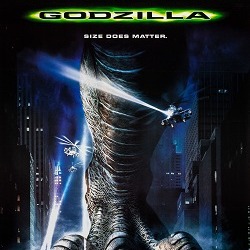
Okay, I couldn’t wait any longer to get this out of my system. Are you ready?
In the Studio
Henry G. Saperstein was granted permission by Toho Studios to present an idea to Hollywood studios for a Godzilla movie. He met with producers Cary Woods and Robert Fried about producing a new Godzilla film. They liked the idea and proceeded to present the idea to a few major studios and were rejected, even be TriStar at first, but final effort proved successful.
A TriStar rep went to Tokyo to oversee and obtain rights to Godzilla, and when negations came to a close, Toho provided specific rules the studio must abide to be requiring specific physical requirements of their version of Godzilla. TriStar would later announce in 1992 they acquired rights from Toho for Godzilla and they would make a trilogy of Godzilla movies, and they promised Toho they would remain true to the original series of movies. This meant they would use caution when referencing nuclear weapons and runaway technology.
Expectation from Godzilla fans was high, and the studio promised they wouldn’t be disappointed. Toho Studios Godzilla filmmakers gave TriStar support and looked forward to one day having a friendly competition to see who would make better movies.
Production Phase
Jan de Bont would be given the job to create Godzilla and have the movie completed for release in the summer of 1994. His concept for the monster was to not have him atomic like the original but design him to be a creature from Atlantis that would defend the earth from a monster called “The Gryphon.” Stan Winston designed the monsters for de Bont and his Godzilla was true to Godzilla’s features.

Winston’s original, unproduced, design for de Bont
Jan de Bont presented his storyline to TriStar, they approved it, however, they didn’t approve the budget he requested to make the movie. Since an agreement couldn’t be made, de Bont quit.
Ted Elliot and Terry Rossio wrote the original script and revised it after de Bont can aboard as director. After he left, they rewrote the script and finished it in 1995. TriStar, however, hired Don Macpherson to rewrite the entire Elliot and Rossio script. Macpherson was a big Godzilla fan and felt the original script lacked depiction of what Godzilla was.
Roland Emmerich was approached to direct Godzilla and Dean Devlin as the producer. They would agree to do the job if they had control in making the movie as they saw fit.
The original script was tossed and Emmerich started from scratch and designed Godzilla to his vision because the original Godzilla didn’t make any sense. Emmerich and Devlin wrote the script in five weeks and changed a lot of features, or power, this Godzilla would have - everything would be practical and real, unlike the original monster.

And so, what TriStar delivered, well… yep.
The Story
In French Polynesia, an iguana nest becomes exposed after a nuclear fallout. Meanwhile in the South Pacific Ocean, a Japanese ship is attacked by a large creature and only one person survived, to which he repeatedly chants “Gojira.”
A Dr. Niko Tatopoulos is in Russia researching radiation effects of wildlife at Chernobyl when he’s approached by officials from the U.S. State Department to aid in identifying shipwrecks in Jamaica and Panama. There, Niko, or Nick, finds skin samples of an unknown creature.

A giant creature appears in New York City. The military doesn’t destroy it, but they wounded it. Nick collects blood samples from the creature and discovers it produces asexually and is collecting food for its offspring.
Nick’s ex-girlfriend, Audrey, betrays him when she steals a top secret video tape from his tent at the army mobile HQ. She wants to use it to launch her media career, but the tape was stolen by her boss and he lies, claiming he, himself, obtained the video. Nick is removed from research team.

A Frenchman, Phillippe Roache, and his team are agents from the French Secret Service assigned to monitor the movement of the monster. Their mission is to cover up France’s responsibility of creating Godzilla, a giant iguana, from their nuclear testing. The agents believe Godzilla hid a nest somewhere in the city and they need Nick’s help to find it and destroy it.
Godzilla reappears and is attacked by a submarine. It fires a torpedo and when Godzilla disappears underwater, the U.S. forces believes the monster is dead.
Nick and the Frenchmen find the best in Madison Square Garden. Audrey and her cameraman, Victor, follow them inside and in the arena find a pile of eggs. After a few minutes, the eggs hatch and mini giant Godzilla babies are emerging. They chase the team and all the Frenchmen are killed except Phillippe. Only four are left: Nick, Phillippe, Audrey, and Victor. They lock themselves in the broadcast booth and from there, Audrey transmits a live report with the nest below. This prompts the Air Force to launch an air raid to destroy the eggs and hatchlings.
After the raid, Godzilla emerges from the downed building and goes crazy with rage. It chases Nick and the team throughout the city. Nick lures Godzilla onto the Brooklyn Bridge, the Air Force kills it. Nick and Audrey make up, Phillippe gives thanks and quietly leaves. Meanwhile, a single egg survives and a baby Godzilla emerges with a tiny roar. The end.
Audience Reception
True fans disliked the movie very much. The idea of a giant lizard rampaging between tall buildings was ridiculous. It didn’t have special powers, just… hot breath? Fellow film critics had nothing nice to say and Toho Studio execs even went as far as dubbing this as the Hollywood Godzilla which struck a nerve for Emmerich. He defended himself by saying he was never a Godzilla fan because the concept of a giant creature with atomic powers was far fetched. He only agreed to make the movie because of what he was offered and for that amount of money, he couldn’t say no. Emmerich blamed having a deadline contributed to the lack of success.
Financially, the movie profited. However, this Godzilla movie was a box office flop.
Final Word
This movie was awful. Period.
Cast and Crew
Starring: Matthew Broderick, Jean Reno, Maria Patillio, Hank Azaria, Kevin Dunn, Michael Lerner
Director: Roland Emmerich
Screenplay: Dean Delvin
Studio: Sony / TriStar
Movie Grade: 0.0 to 4.0
Score: 2.5
photos: Getty Images
#godzilla#movie review#movie critic#movie time#movies#thriller movies#movie theme#review#movie talk#monster#reviews
4 notes
·
View notes
Text
4K Ultra HD Review: Flatliners

While the 2017 Flatliners reboot proved to be dead on arrival, the 1990 original still has life in it. Director Joel Schumacher (The Lost Boys, Batman Forever, Batman & Robin) brings the candy-colored visuals with which he was synonymous to a medical school’s gothic architecture. He and cinematographer Jan de Bont (Die Hard, The Hunt for Red October) use neon blue lighting as a bad omen, while warm colors are reserved for more uplifting emotions; a stark contrast to the reboot's glossy, modern science fiction aesthetic.
In the film, ambitious-to-a-fault medical student Nelson Wright (Kiefer Sutherland, The Lost Boys) convinces four of his brightest classmates - pragmatic atheist David Laccio (Kevin Bacon, Tremors), the brooding Rachel Mannus (Julia Roberts, Pretty Woman), womanizer Joe Hurley (William Baldwin, Backdraft), and the humorously bookish Randy Steckle (Oliver Platt, Lake Placid) - to assist him in a reckless experiment in the pursuit of scientific advancement and fame.
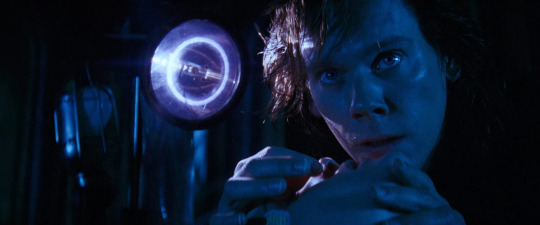
With the aid of his friends, Nelson is clinically dead for one minute “to see if there’s anything out there beyond death” before being resuscitated. It miraculously works, leading them to attempt to outdo one another by going longer and longer before being revived. Although they return in fine physical health, they begin to suffer from nightmarish visions in which physical manifestations of those they wronged in the past come back to haunt them - literally.
Flatliners never quite achieves the full potential of its ingeniously simple premise, although it's not difficult to understand why Peter Filardi’s (The Craft) well-researched spec script caused a bidding war before selling to Columbia Pictures for $450,000. It becomes a tad redundant, but like the characters in the film, a desire to glimpse at the afterlife sustains viewers' intrigue. The compelling story is bolstered by the star-studded cast, kinetic direction, and hyper-stylized visuals.

To make the film more dynamic, Schumacher and de Bont smartly opted to shoot it as if it was an action movie. Schumacher also moved the story from its original setting of Boston to Chicago. On-location filming lent the city's baroque architecture and gritty aesthetic, while Eugenio Zanetti (Last Action Hero, What Dreams May Come) adds salient production design.
Although more of a thriller than a horror movie, Flatliners' genre elements are strong in the visions that the characters experience once revived, occasionally bringing to mind the likes of A Nightmare on Elm Street. But at the core of the story is drama - exploring themes of karma, atonement, and redemption - with a rather life-affirming message. The emotionally resonant score, composed by James Newton Howard (The Hunger Games, The Sixth Sense), traverses between the film’s exploration of beauty and horror in the afterlife.

With all five actors electrifying the screen in the primes of their careers, the ensemble cast feels like an extension of the brat pack. (Sutherland jokingly referred to the film as The Breakfast Club Dies and St. Elmo's Funeral.) Sutherland is as perfectly arrogant as he was in his previous Schumacher collaboration, The Lost Boys. Roberts had already filmed her breakout role in Pretty Woman but it hadn't come out yet (it would release five months prior to Flatliners). Bacon credits the film with reviving his career, as he had a string of underperformers following the success of Footloose.
The supporting players include child actor Joshua Rudoy (Harry and the Hendersons) as the boy who haunts Nelson and Hope Davis (About Schmidt) in her film debut as Joe's fiance, along with Kimberly Scott (The Abyss), Patricia Belcher (Jeepers Creepers), and Beth Grant (Donnie Darko) in small roles. Although not on camera, screen icon Michael Douglas served as a producer on the project; the first effort from his Stonebridge Entertainment.
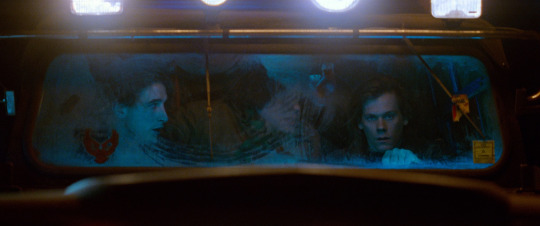
Flatliners has been newly resuscitated in 4K from the original negative, approved by de Bont, for Arrow Video's new 4K Ultra HD and Blu-ray editions. The 4K UHD disc features Dolby Vision and Lossless DTS-HD Master Audio 5.1 and 2.0 surround audio options. Schumacher and de Bont were already a perfect pairing, but Arrow's flawless restoration allows their bold visual palette to really shine.
Critics Bryan Reesman and Max Evry contribute a new audio commentary in which they dissect Schumacher's work and examine Flatliners in the context of its contemporaries (which made me eager to double-feature it with Jacob's Ladder). Schumacher passed away in 2020 and the cast members were not available for interviews, but Arrow tracked down a variety of crew members for new, in-depth interviews, offering several rare perspectives that are likely to give viewers a new appreciation for the production.
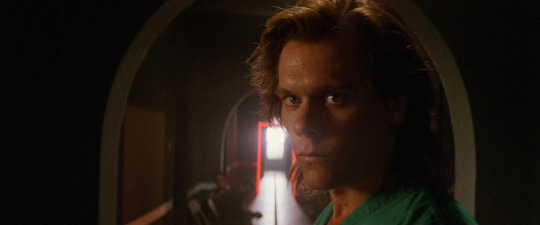
Filardi details the experience of selling his first movie, being on set during the production, and seeing the final product. De Bont and chief lighting technician Edward Ayer provide a fascinating breakdown of the visuals, with De Bont discussing his approach while Ayer explains how they pulled it off. Howard, orchestrator Chris Boardman, Zanetti, art director Larry Lundy, costume designer Susan Becker (True Romance, The Lost Boys), and first assistant director John Kretchmer each give their unique insight into how they added to the tapestry of the film as well.
The theatrical trailer and an image gallery are also included, alongside a 35-page booklet (exclusive to the first pressing) featuring new writing on the film by historians Amanda Reyes and Peter Tonguette. Reyes provides a historical overview of near-death experiences and how they compare to Flatliners, while Tonguette explores the film's surprising spirituality. The release carries new artwork by Gary Pullin, with the original poster on the reverse side.
Flatliners is available now on 4K UHD and Blu-ray via Arrow Video.
#flatliners#keifer sutherland#kevin bacon#julia roberts#oliver platt#william baldwin#arrow video#dvd#gift#review#article#gary pullin#horror#joel schumacher#peter filardi
16 notes
·
View notes
Text
A little over a week ago, we spoke with Sammy Hagar about his new album Crazy Times, which he cut with Nashville producer Dave Cobb and his longtime band The Circle. “It’s a concept record,” Hagar said. “It’s about how I feel about everything that has gone on since the pandemic started.”
Near the end of the interview, the conversation inevitably turned toward Van Halen and the possibility of a tribute concert to Eddie Van Halen featuring all the surviving members of the band. A few days later, we heard from Hagar’s camp that he wanted to get back on the phone: He had a lot more to say about his former band. “I really think that it’s OK just to speak how I really feel now,” he said when we reconnected, “because there is no animosity left in my heart, in my soul, anywhere.”
We wound up talking about Van Halen for more than an hour. The conversation touched on everything from his initial departure from the band in 1996 to his emotional reunion with Eddie Van Halen a few months before his death in 2020. Along the way, he revealed that Irving Azoff, Van Halen’s manager since the early 2000s, reached out last year to gauge his interest in a possible Las Vegas residency with drummer Alex Van Halen, bassist Michael Anthony, and a superstar guitar player. There are no concrete plans at the moment to make that a reality, but he does hope to finally make peace with Alex Van Halen in the near future and reestablish a friendship that has suffered from years of estrangement.
Here’s a slightly edited transcript of the conversation:
Let’s go all the way back to the Twister soundtrack in 1996. The story you often hear is you guys couldn’t agree on the lyrics to “Humans Being,” and everything just unraveled from there. Is that accurate?
“Yes, it really is. But that was the temperature of the band at that time. It didn’t matter what we were going to do. We were fighting about everything. That was because, I think, we were poisoned by the management that came in at that time. But that particular argument was about the lyrics.
I talked to the director [Jan de Bont], and he sent me the script for the movie and said, ‘Study this. There’s some really great terminology that they use in relation to the tornado chasers.’ And so I drifted through it and I got a bunch of cool lines out of it. I don’t remember them all now, but I just remember that the chorus was ‘dropped down.’ It was like ‘Right Now’ in that it was a very percussive lyric, and a great phrasing to start the chorus.
But Eddie and Al went nuts and said, ‘Oh, my God. This is corny. You can’t talk directly about the movie.’ It’s not like they had an idea, but at that time they just didn’t want to use too much verbiage about actual twisters. I thought, ‘Well, I think they’re wrong, but OK, whatever.’
I come back into the studio to do it with producer Bruce Fairbairn. He gets Eddie out of the room and says, ‘Look, how about just a bunch of imagery?’ And then Eddie had said ‘Humans Being’ for some reason. That was the first time he ever really titled a song that I was involved in writing. And I thought, ‘Humans Being. Yes. That’s fine. I like it.’
So I just blurted out this stuff. I sat on the hood of a car in the back of the studio with Bruce Fairbairn, and I just started writing things down. ‘You break this, I’ll break all that/You break my balls with all your crap/Spread your disease like lemmings breeding/That’s what makes us humans being.’ I had just watched a documentary about lemmings jumping off cliffs in Alaska. I was just thinking of anything and everything that was in front of me. And Ed loves it: ‘Yeah, yeah. This is what I was talking about.’”
youtube
Did you quit or were you fired?
“Oh, I was fired. I was told that I quit by Eddie. It was Father’s Day, Sunday morning, 9 am. The phone rings and I’m laying there with my brand new baby. He goes, ‘You know, you always just wanted to be a solo artist, so go ahead and be one. We’re going to get Dave back in the band.’ And when he said that, I flew up out of bed like I’d seen a ghost. And I said, ‘Wow’ and a few expletives went back and forth from me. That is not what the song ‘Eagles Fly’ is about, but it’s the opening lines of it. [Sunday morning, nine A.M./I saw fire in the sky/I felt my heart pound in my chest/I heard an eagle cry.]
I called the manager that was poisoning all this stuff and I said, ‘Guess what just happened?’ And he went, ‘Oh, fuck. He did it? He made the call?’ I said, ‘Yes, he made the call.’ And he goes, ‘Let me get back to you. I suppose you want a golden parachute.’ I said, ‘I want to know what the fuck is going on. I don’t need anything. I just want to know what the fuck is going on.’
That’s what happened. It wasn’t like he said, ‘You’re fired.’ He just said, ‘You’re quitting the band. You’re leaving the band. We’re moving on without you.’ Whatever. It was not my call, whatsoever.”
youtube
I’m sure you had sympathy for Gary Cherone because you’d been in his position a little over a decade earlier. He didn’t have it easy.
“Oh, I have total sympathy for him. He’s such a great guy, and he’s a talented guy. But he was so wrong at that stage of the band. He might have been able to replace Dave [in 1985]. The band still had a lot of legs left back then. When Cherone came, that type of music, even Van Halen, the mighty Van Halen, was going down, because of the grunge movement and all that. I mean, it was kind of over for us. We weren’t getting all the positive press. We weren’t getting the spins on MTV. We weren’t getting the spins even on radio. And so that was bad timing for Gary. So whether or not it didn’t work for whatever reasons, it was just a bad time to be making that move. That was the biggest mistake the band has ever made, I think.”
Let’s move onto the Sam and Dave tour of 2002. Did that go as well as you hoped it would?
“Yes and no. That tour was successful. I did very well on that tour as far as the comparisons went [between us as vocalists]. And the idea was to get Van Halen’s attention and get us both back in the band and do what was inevitable. A reunion tour with both of us would have been the biggest thing Van Halen ever did.
But it didn’t work out that way because Dave doesn’t play well with others. He just made a mess out of it. It could have ended with us both standing there with our arms in the air going, ‘Hey, good job, buddy. Let’s go talk to the brothers.’ That was my intention, and it didn’t happen. Instead, I got a reunion out of it. It wasn’t my favorite reunion, but that’s what happened.”
youtube
I read stories in the press that things were so bad on that tour between you and Dave that they physically built a wall backstage to separate you.
“Yes. I think that’s production managers and tour managers getting in the middle of our bullshit. They made the wall since we nearly got into fisticuffs one night. They promoters were like ‘Oh, we gotta keep these guys apart. This tour’s doing too good. We don’t want to see it break up because there’s some lawsuit.’ And so they put up a barricade between our dressing rooms.”
youtube
It’s like you guys are the Israelis and the Palestinians.
“Yes. It was the wall that Trump wanted to build. It was so thin though. It was just a bunch of plywood on little stands. If you really wanted to get to somebody, you could just kick it down. I used to knock on the plywood to yell at David when I was getting ready to go on stage because we flip-flopped: He would open one night, I’d open the next. And when he had already played, I’d be beating on the thing and I would say, ‘Dave, I’m going on. Come on up in about an hour and we’ll play a couple tunes together.’ He wouldn’t even respond.”
You got into a lot of sordid details about the 2004 Van Halen reunion tour in your book. Eddie was deep into the throes of alcoholism back then. He was a very sick guy. Do you have any regrets about revealing everything that went down?
“You know, I was so angry after that tour with everything that had gone on. I wrote about it all, yes. Everything I said was true. I regret it now only because if someone reads it after Eddie’s death, they can’t go to Eddie and ask him about any of it. Back then, it was my word against his. But I don’t remember if anyone in their camp ever spoke up about any of it. I think everyone knew what condition Eddie was in. It wasn’t any frickin’ secret.
Rolling Stone has that whole article about that guy that befriended him. Just read that through the lines, and you’ll see it’s the same guy that I was dealing with. I just wish I knew he was sick at that time. He had had his tongue cut off, but he was adamant that he was cancer-free and he was healthy and fine. He wouldn’t listen to anyone. If someone would say, ‘Ed, you need to not drink so much, and you need to get some food into you,’ he was like, ‘Fuck you.’ Nobody, not even his brother, could get through to him.
But in writing about it, I broke a rule. I broke the locker-room rule amongst athletes and amongst friends and clubs. It was a boys’ club. ‘None of this gets out of here. What happens in Vegas stays in Vegas.’ I was just so angry. I really wanted to get my side of the story out because a lot of people thought, ‘Well, maybe it was my fault.’”
That tour does sound like it was absolute hell for you.
“There are things that I can tell you now that I didn’t waste my time on in the book…He was so out of tune and playing the songs so wrong that there were times I couldn’t sing well. I had a hard time staying on key. I’d go over and I would sing with the bass because Mike would always be in tune. I’d sing to the bass, but the problem is they had Ed’s guitar so loud because he would go out there every day during soundcheck and make sure his guitar was screaming. He would insist that his guitar was extremely loud in the mix. Hey, it’s Eddie Van Halen. I wanted to hear it loud too. But if you’re just hearing my voice and his guitar, you’re going, ‘Man, Sammy’s not singing too good.’ Or if you’re really a good musician, you’d go, ‘Well, wait a minute. Eddie’s not playing so good. So what’s going on?’”
youtube
You mentioned that recent Rolling Stone article. I want to read a few things that Eddie said about you in it. Let’s start with, “It’s all about the money when it comes to Hagar. He used the band to elevate himself.”
“No. That’s when Ed was in that frame of mind where he wasn’t thinking straight. He was being fed weird information. He was doing a lot of drugs and alcohol and he was paranoid. He wasn’t thinking right. Everyone knows it. Look at the pictures of him on the internet from that era. He was a mess. He wasn’t thinking straight, and somebody was poisoning him with that.
I am not about the money. I am about fame and fortune, yes. That’s what I wanted my whole life. Once I got it, the question becomes what you do with it. You use your celebrity to enlighten people and to bring awareness. That’s what I’m all about, and I’ve always been about that.
I’m a business guy. I love business. I love creating things, and seeing them make it. That bothered Ed and Al to death because they didn’t think like that. They just would say, ‘What are you doing?’ ‘I’m making a bicycle.’ ‘Why are you making a bicycle?’ I’m going, ‘Because I ride bikes. I want to make a good one, and make one better than everything else.’ And that’s always my premise. But my ambition and my creativity just drove them nuts because they didn’t understand it.”
Here’s what Ed said about Michael Anthony: “When Hagar quit, Mike went with him instead of staying with Alex and me. That was as much of a betrayal as Roth blindsiding us when he quit. We didn’t see either one coming!! All we had was ourselves.”
“That is so not true. Mikey didn’t leave Van Halen. Mikey was replaced in Van Halen by [Eddie’s son] Wolfie, and he found out about it in the press.”
Ed’s perspective was that Michael essentially quit Van Halen when he started doing gigs with you.
“Yes. That’s because he wasn’t in a very good frame of mind. Mikey sat around for five friggin’ years. And then he started coming out with my band as a special guest. It was really cool because it made me feel comfortable, especially on the Sam and Dave tour, to have Mikey there. It warranted me playing more Van Halen material.
Before that I was only playing two or three Van Halen songs. With the Wabos, I was not about trying to be a Van Halen cover band. And Dave had come out with this Van Halen cover band playing all Van Halen. He didn’t even play ‘Just a Gigolo.’ He didn’t even play ‘California Girls’! These are his biggest hits. And I thought, ‘What an idiot. I don’t think that’s cool.’
Having Mikey there made it more fun for me to play the Van Halen stuff. And still today, in The Circle, we play more Van Halen than we ever did because Mikey’s in the band, number one. And number two, there is no more Van Halen. So now, I feel great about playing it. It’s part of my life. I was in that band for about 11 years.
And when Dave came back to the band, they pretended like I’d never been in it. There weren’t those Number One albums, those Number One hits. Those 40 million albums never existed. That’s stupid. It’s not what I do right now with Mike.
But with Mike, they just interpreted it that way. The second Mikey would’ve got the call to be in the studio, he would’ve been the first guy there, like he always is. Mikey would join Van Halen today and quit The Circle, if there was such a thing. Mikey never betrayed anybody. He would just say, ‘I’m going out and having fun with Sam.’”
Tell me about getting back in touch with Ed in the final months of his life.
“It was the craziest thing. I heard he was sick, and I heard it from pretty good inside information, so I knew it was true. Every now and then, people would send me photos of him on the internet. He did not look good at all. I’d be like, ‘Fuck.’
So I called up [Steve] Lukather. Him and Ed are dear friends. I said, ‘How’s Ed doing?’ He goes, ‘Aww, Sam, not so good.’ I said, ‘Would you please give him my phone number and tell him if he wants to, to please call me. I would love to talk to him. I don’t want anything. I’m not trying to get a reunion. Trust me.’
He told me later, ‘I gave it to him.’ And I said, ‘What did he say?’ He said, ‘He loves you, man.’ So then [the comedian] George Lopez calls me and said, ‘Sammy, you got to call Ed. He’s in real bad shape, and you need to call him.’ And I said, ‘Well, fuck. Here’s the number I have.’ And he goes, ‘No, that’s not his number anymore.’ So I said, ‘Give me his number.’
I had told a couple other people the same thing. I told Irving Azoff to have Ed call me. I left Alex Van Halen voice messages and emails, which he never returned. I said, ‘I would love to talk to Ed if he’s willing to talk to me.’ And I told everybody the same thing. I didn’t want to call Ed in his condition and have him say, ‘Fuck you, you asshole. You quit the band.’
I’d have a hard time not grabbing the rope and arguing with him. So I didn’t know what his headspace was because that’s where we left off, and I didn’t know if he was still there. So anyway, I called George and I said, ‘George, I’ll do it.’ And he goes, ‘You’ve got to do it Sammy. You’ve got to do it.’
So I hung up and called Ed. I said, ‘Ed, man. How are you, man?’ He said, ‘I’m hanging in here, dude. I’ve been fighting this for fuckin’ 15 years.’ I said, ‘I know, it’s terrible.’ And we went right into that. We didn’t try to bury any hatchets or apologize for anything. We just went right into how he was doing and he told me.
I said, ‘I’ve been wanting to reach out to you. I just didn’t know what kind of headspace you’re in. I called your brother. I called Lukather. I called Azoff…’ And he goes, ‘Why didn’t you call me?’ And I go, ‘Well, that’s a good question, and I’m calling you now.’ We had a big laugh about it. He said, ‘You want to talk to me? Talk to me.’
I felt like he was in a really good headspace. It really touched me hard when he said it like that. ‘If you want to talk to me, call me.’ He was never that kind of guy before. Ed was always a humble, quiet, sweet little guy. Then he went crazy…with a different kind of attitude, too.
But this time he was purely solid in his head. He had really come to terms, I felt, with his illness. I told my wife, ‘Ed really sounded like the most together Eddie Van Halen I’ve ever known, of all times.’
He said to me, ‘I’m going to beat this shit… I think I’m going to need to finish up [my treatments] this year, and maybe next year we can get together and make some noise.’ I said, ‘Ed, that’s not what I’m calling about, but if that’s going to happen, then you can always count me in to play music with you, my friend.’
So then a couple other times, about a week later, I started texting him and sending him pictures of funny shit that I had stored up, things that happened when we weren’t talking. He started sending me stuff and we texted a lot back and forth, maybe a couple of times a week.
And then all of a sudden, I didn’t hear from him and he didn’t answer my texts. I left him a voicemail. ‘Ed. I ain’t hearing from you. Don’t make me nervous.’ And so he gets back and says, ‘Dude, I just got out of the hospital. I got a fucking tumor on the side of my neck that just popped up that they had to remove.’ I said, ‘I want to come and see you, Ed.’ He’s going, ‘I’ll let you know when.’ I said, ‘I’m going to come over. I’m going to cook for you and fuckin’ make a big old pot of spaghetti, man.’
When he lived next door, I used to cook for him all the time. So I said, ‘I’m going to come over and cook for you and really catch up and hey, maybe we can even write a song. Blah, blah, blah.’ And he said, ‘Yeah, I’ll let you know.’ And then I started getting less and less communication. I think the last one he wrote said, ‘Sorry. I’m not responding. I’m in the hospital.’
We had been doing FaceTime and shit before that. I’m looking now and the last video I sent was October 1, 2020. He died that week.”
That must have been just an unimaginable gut punch.
“Yes. [Choking up a bit] I don’t think I’ve cried that hard since my mother or father’s death. Even when you know it’s coming, you always have hope. You always hope for that miracle. You hear about people that had stage four cancer, and had friggin’ everything removed but their brain, and all of a sudden, a miracle, they come back. So yes, you’re always hoping. Ed had the money, he had the fame to where any doctor in the world would’ve dropped anything to try to save his life. So obviously, he had the best you could get, and it didn’t work.”
In those e-mails Rolling Stone recently published, he said he wanted to do the big tour with you, Dave, and Michael. Wolfgang confirmed this in many interviews. It’s going to go down in rock history as one of the best tours that never happened.
“What a shame, huh? I mean, honestly, the shame is that Eddie Van Halen’s no longer with us. That’s the shame. But if we would’ve done that…All the damage that I did with my book, the damage Ed did with his actions and his stuff he did in public, and the Cherone shenanigans, and the Roth reunions, my reunion… That would’ve righted everything, if we would have did that tour. That would have righted everything, and I wanted that so bad. Just to all of us to go, ‘We’re clean again. We’re angels. We’re spotless.’ I’m sure this’ll become clickbait if you run it, but there was a time there where I was embarrassed to say I was in Van Halen.”
When was that?
“About six or seven years ago, when they were out with Dave, and Ed was still really in bad shape. They were out there making a lot of noise as Van Halen, and somebody would say, ‘Sammy Hagar from Van Halen.’ And I would go, ‘Hey, hey. Just Sam Hagar. That’s enough.’ I wanted people to know, but it was almost like it was a black mark because Roth was doing crazy stuff, and Ed was doing crazy stuff. I didn’t want anyone to think that I was Diamond Dave.”
Let’s move into the present now. Joe Satriani jammed with Alex and Jason Newsted last year. Did Joe call you up before doing that to say it was happening?
“No, because the Van Halen camp is 100% secrecy. I bet when he walked through the door, they made him sign something, and I’m dead serious. Alex is a very, very secretive guy. I don’t know how he can keep his lips so sealed. I could probably say something horrible about him right now and he wouldn’t even respond. Don’t take that the wrong way. I have nothing bad to say about him. I’m just talking about how stubborn he is. He does not budge.
But Joe told me about it later, after it happened. I knew there was talk of it because Irving Azoff had called me. He said, ‘I want to do a residency in Vegas with you and Mike and Al and a superstar guitar player.’ And I said ‘Like who?’ And he said, ‘Like Joe Satriani.’
I said, ‘It just sounds like Chickenfoot with Alex Van Halen instead of Chad Smith.’ I wasn’t much for that, as much as I love Joe. He could do that job best, without a doubt, because he’s so friggin’ anal about the way he plays, and every single note. I said to Irving, ‘I’m going to call Joe.’
When I did, he told me what happened. And I said, ‘Jason Newsted? What the fuck is going on here, man? Whose idea is this? This must be a Dave idea.’ And Irving said it was a Dave idea.
Why would he want anyone but Mike? It’s probably because he knows that Mike and I are so close. I would imagine if they would’ve called Mike, Mike would’ve said, ‘Yes, I’ll do it with Sam.’ Because without Ed, there is no Van Halen to start with. So now, you’re going to go out and just play the early songs, and not play the second era?
That would be the biggest failure Van Halen ever had if they call themselves ‘Van Halen’ if they didn’t have Mikey. If it’s just Alex with other guys, that’s like what Jason Bonham does with Led Zeppelin. There’s a million bands out there doing that. It would be totally nuts. Also, I’d prefer that nobody attempts to replace Eddie Van Halen. I think that’s blasphemy and should be illegal.
Anyway, I think that Irving boohooed it, and Dave went around him and did it anyway. I’m surprised that Alex went that far, but Alex might have just been his methodical self and said, ‘Well, let’s see what this is like. Let’s see how it feels.’”
If they wanted to do a Vegas residency, or any kind of tour, with you and Alex and Mike, is that something that you may be interested in pursuing?
“Not a tour, no. I wouldn’t leave what I’m doing for that. I would make myself available to have a rehearsal, and see which guitar player would work the best. I’m telling you, Joe would be the best. But like I said, then it’s just kind of Chickenfoot with Alex, which there’s a problem there. And I think that’s probably what they were thinking when they tried to get a different bass player, but that’s stupid, too.
I would definitely love to play with Alex and Mike with a great guitar player that doesn’t try to just mimic Eddie perfectly. There’s so many great guitar players. There’s Steve Vai. There’s frigging John 5, who is a great guitar player."
Do you like the idea then of a short Vegas residency or are you thinking of merely a one-off tribute show?
“I’m thinking of one-off weekend or something where we give the money away to some cause. It can’t just be, ‘Hey, we’re going to grab some money.’ I got plenty of money. There’s nothing that I would do for money that I just wasn’t in love with the idea of doing. And I’m not in love with the idea of being Van Halen without Eddie Van Halen.
Matter of fact, I’m dead against it. But I would love to play music with Alex and Mike again. I would love to play those song agains. And if we did a residency or a tribute, I would sing 50/50. I would sing half the Dave songs too for the Van Halen fans. And those songs are great. I don’t mind singing some of them. The lyrics don’t fit in my life today, but neither does ‘Rock Candy’ or ‘Bad Motor Scooter.’”
I think at this point, I’d rather hear you sing “Ain’t Talkin’ ’bout Love” than Dave. He just really can’t sing anymore.
“It sure sounds that way to me, everything I’ve heard. But I just think it’s crazy to do anything that’s called Van Halen without Eddie. I would love it if Dave wanted to do a tribute where he’d sing ten of his songs, and then I’d come out and do ten of mine. That would be great with Alex and Mike and maybe a bunch of different guitar players. Look at what Dave [Grohl] just did for Taylor [Hawkins]. That’s one of the greatest events in rock history. That’s right up there with the early Farm Aids, and right up there with Live Aid. That was a great event, and that could be done for Ed with everybody playing.”
youtube
Why don’t you just call up Alex and talk this stuff over?
“Well, I’ve left him many messages, but not for this one. But I always think about Alex. I just dreamt about him two nights ago. I dream about people constantly. I believe it’s real cosmic shit that happened on another dimension. I dream about Eddie all time. But Al, I dreamt about him and it was so wonderful. It was friendly. I said, ‘Come on, Al. Let’s do something and let’s do it right.’
The only way to do it is to put both eras together and do it for a cause, for a purpose, not for a money grab, not like the whole tour, where we’re going to make 10 million bucks apiece. None of that shit. It could be a residency, it could be two or three nights. I wouldn’t do more than that unless the rehearsals blew my mind and I’m going, ‘This is the most fun I had since the original Van Halen.’ That would cause me to be more open. I mean, if we do it and it’s wonderful and successful and the fans love it, I’d go, ‘OK, let’s go and do 10 cities.’ But I couldn’t just go out as Van Halen. There’s no friggin’ way.”
When’s the last time you spoke with Alex? Was it 2004 on the last tour?
“Yes. At the end of the tour. We finished in Albuquerque, and Ed went completely off the rails. Irving Azoff grabbed me at the end of the show and said, ‘Get in the car and get the fuck out here.’ We were supposed to go on the same plane together. We had a plane and we were going to fly home, and he saw what was going on earlier and he chartered me another plane by myself with my wife and my tour manager.
I was walking off the stage, somebody goes and grabs me and said, ‘Keep on going. Get the fuck out of here, right now. Go.’ Well, he just knew a fight would have broken out because Ed was so belligerent on that last show that I wanted to beat his ass.
So Alex came up to me right there at the same time and gave me a big hug and said, ‘I love you, man. Thank you. Be careful. Safe flight.’ And that was the last time. And I think we talked on the phone a little bit, but I don’t know what happened with Al. He kind of drank the Kool-Aid or something.”
youtube
They haven’t done much with the catalog from your era of the band. Are you hoping they re-release it?
“Well, I think it’s going to have to be inevitable because we sold 46, 47 million records with me in the band. They were all Number One albums. You can’t just leave that and have it sit in the Dumpster. Warner Brothers has been pushing forever to do something, but I know Dave is against it. Dave likes to pretend like I was never in the band.
Alex is not active. He’s not out there pushing it and talking to people like you. He’s not making plans. I think he’s still licking his wounds from his brother’s death, and God bless him, man. I don’t know how he could deal with it. I’m having a hard enough time myself.
I think when Alex comes out of his shell, he’ll probably do it. And like I said, I’m thinking about reaching out to Alex. You’re pushing me in that direction, and I’m feeling it because it’s time. It’s been a couple of years now that I gave up on him.”
Do you think the albums need to be remixed or just remastered?
“Remastered. Remastering can bring out more of what’s on that tape that you don’t hear in the old mastering. It doesn’t hurt anything. I don’t like changing things too much from the vintage. I’m a purist. That’s why people love vinyl. They like to put them on and have them sound like the old records…I’m thinking of the early stuff like OU812. That didn’t have enough bottom on it, and it had no bass. It was one of those…I hate to tell you why, but everyone was so fucked up. They had the bass so loud in the studio since everything was really loud. It was so loud on the playbacks. But if you turned it down, the bass was not there. It needs to be remastered more than any of them.”
Album box sets are also a chance to release demos, studio outtakes, and live stuff from the era. Fans would love to hear that.
“I don’t know how much of that stuff is around. It’s all in 5150 studios somewhere. I shouldn’t be saying where it is, but I know it exists. And I do believe Wolfie is in charge of it. I heard things were turned over more to Wolfie than to Al.”
Have you spoken much to Wolfie since he was a kid on the 2004 tour?
“Yes, but not a ton. I really gave him a lot of love when he made his first record, and he gave me some back. It was very cordial, not like, ‘Hey, let’s get together’ and stuff like that. I mean, Wolfie blows my mind. Look what he did over in London for that Taylor thing. When he played Eddie’s stuff, man, that was fuckin’ really good. He just keeps impressing me with his talent. That song ‘Distance’ is so soulful. I had no idea he could sing like that.
He’s really got his pop’s talent. It’s kind of like Jason and John Bonham. I mean, Jason’s just like his dad, man. He plays fuckin’ that good. And I think Wolfie, maybe not as innovative because nobody is, but yes, he’s definitely doing it right. I praise him for not trying to be Eddie.
But now, I’ll make a statement. If there was ever a situation where there was a Van Halen tribute in some kind of way with Alex, Mike, myself, Dave, if he would cooperate, and Wolfie playing Eddie’s parts, now that would be worthy of calling ‘Van Halen,’ for a moment. Wolfie would be crazy to drop his life and his creativity and his career to be his dad’s mimic. But for a moment, it could be great.”
youtube
Just to clarify a few things, when did Irving Azoff call you with the idea of the Las Vegas residency?
“I’m trying to remember. It was six months ago or something. It was probably a month before [the rehearsals] hit the press.”
There’s been nothing since then?
“Irving said, ‘Alex isn’t yet ready to do anything. He’s still in mourning.’”
In your mind, it’s still a possibility though?
“I guess so. But it’s not on the top of my agenda. Waiting on someone from Van Halen, I don’t care which guy it is, it’s how the band broke up to begin with.”
youtube
Roth was asked recently about a tribute show. He said, “I was the one who named the band. Are you talking about a tribute to me?”
“[Huge laugh] There you go! [Even bigger laugh] I should start following Roth. He would keep me laughing, I’m sure. Oh my god, this guy! What the fuck? Just imagine if I said that. I was in the band. I wrote all the songs with Eddie, just like he did. He wrote the lyrics and the melodies. Warner Brothers mentioned wanting to name the band Van Hagar when I joined. Eddie and I said, ‘No, no, no. This is Van Halen.’ I was joining Van Halen. And so imagine if I went around talking like that? I’d get thrown out of the business. How can Dave get away with that shit? Oh, what a fuckin’ screwball.”
In that same little interview at the airport, he said you’d need two of everything for a Van Halen tribute. He mentioned Lukather and Satriani, Jason Newsted and Michael Anthony, Tommy Lee and Alex Van Halen.
“They don’t need two bass players. Michael is a better bass player today than he was in Van Halen. He’s as good a singer, if not better, than he was in Van Halen. I’m sure Alex can play as good as good. He’s a great, great drummer. I know what I can do. I’m probably better than I’ve ever been. I think Diamond Dave is the one we want to worry about here.”
youtube
He mentioned Pink as one of the possible singers.
“I love her. I bet she could crush his era of songs. She’s got that husky voice. She’s got the range and the power. She would erase him if she jumped up there and started singing that shit. I wold love it. I would throw my hat in the ring with Pink any day.”
The reality is that Dave is basically retired. Wolfgang is wisely doing his own music. Alex is off the grid. You and Michael are the only ones keeping the music alive.
“One hundred percent. Alex, he’s not going to try to put a Van Halen tribute together. He would never. Alex has got more dignity, and it’s not his style. When Dave goes out, he just does his stuff. But Mike and I together, we’re The Other Half. There’s two of us from the band. We’re two out of four. And it’s that vocal sound between Mikey and I, with his background vocals, and my lead vocals, that really has all the identity for the Van Hagar era.
Jason Bonham’s father was Alex’s hero. All he ever wanted was the John Bonham drum sound on ‘Poundcake’ and these other songs. Those songs are pure Led Zeppelin as far as the drumming, and Jason plays this stuff as good as anyone on the planet. Vic Johnson is a genius. He’s the most underrated guitar player in the world, in history. I think we play it as good as anybody except Van Halen…
And look, everyone thinks I changed [Van Halen]. This is really important. I’m glad you put this into my head. Those ballads, Eddie presented them to me. ‘When It’s Love,’ ‘Love Walks In.’ Eddie was so horny to show off his keyboard playing because Roth hated it. And Eddie was a good keyboard player, almost as good as he was on guitar. And when I heard what he was doing, I’m going, ‘Holy shit.’ I got inspired. And we wrote those songs. When he played me ‘When It’s Love,’ the words just started pouring out of me.”
If you were to get Alex on the phone today, what would you say to him?
“I’m going to say what he always said to me. I’m going to say, ‘Alex. We ain’t getting no younger.’ Every time he came to me for a reunion or to get back in the studio after taking a break he’d say, ‘Sam, we ain’t getting no younger.’ So I would tell him that. Then we’d have a big laugh and catch up. I wouldn’t start with business things since they wouldn’t be first on my agenda. I’d want to see how he’s really doing. Hopefully he’s doing well, and then we’d be able to reconnect instantly, like we did for the reunion.
Alex is a really sweet guy. He’s just tough. He’s really hard, man. He’s Dutch, man. You know what I mean, he’s like some old 1700s kind of guy. He’s really a tough, old-school kind of person. He’s closed up, but he has a big, big heart. That’s probably why he’s so closed up.”
The fans really want this tribute show. It’ll be really cathartic, and it’ll be closure.
“I agree. I think it’s necessary.”
#van halen#eddie van halen#michael anthony#sammy hagar#david lee roth#alex van halen#wolfgang van halen#gary cherone#2022#rolling stone#rolling stone magazine#post van halen#humans being#sam and dave tour#reunion tour#van halen tribute#eddie van halen tribute#the circle#jason bonham#vic johnson#steve lukather#george lopez#taylor hawkins tribute concert#mammoth wvh#videos#YouTube#crazy times#interviews
6 notes
·
View notes
Text
Speed
youtube
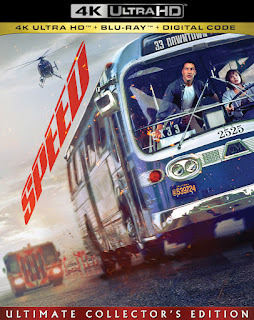
Today’s entry will mark the first official 4K home video release I am writing about. I already own a few other 4K UHDs, and a couple of months ago, I watched my first 4K video at home with 2001’s The Fast and the Furious. However, I already covered that movie’s BluRay release here several years ago, so I will not be dedicating another entry for it, other than to say that the 4K upgrade pops and makes it look like a new release. Today’s entry is for 1994’s Speed (trailer). Before diving into this movie, I noticed one of the tracks from this film’s score repeatedly used throughout sounds awfully like one of the main themes I primarily associated with the Metal Gear Solid franchise. I have no idea if this was pointed out before, and I just overlooked it all these years, or maybe I am grasping at straws. Click or press here to take a listen and decide for yourself.
1994 was a hell of a year for Hollywood movies primarily transpiring from a highway with The Chase, Speed, and the OJ Simpson Bronco chase….oh wait (although I highly recommend the ESPN 30 for 30 on it, simply titled: June 17th 1994). The majority of Speed has a straightforward premise: serial bomber and local madman Howard Payne (Dennis Hopper) planted a bomb on a bus rigged to explode once the bus drops below 55 miles per hour. Police officer Jack Traven (Keanu Reeves) is alerted to this by the bomber himself to exact revenge on Traven after successfully rescuing hostages from an elevator Payne armed at the beginning of the film.
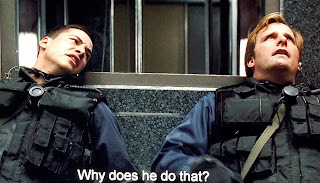
From there, for the middle hour of this nearly two-hour film, the action almost entirely takes place on the bus. Traven makes a grand entrance onto the bus by commandeering a Jaguar and having its owner (Glenn Plummer) take the wheel so Traven could heroically leap onto the bus and save the day. It would not be that easy of a rescue mission as Payne has eyes on the bus, and Traven has to play by his rules and get him his $3 million ransom to disarm the bus.
Without question, the middle hour on the bus is the best part of the film. The opening half-hour is an excellent appetizer with the elevator hostage crisis that Traven and his partner, Harry (Jeff Daniels), successfully foil. However, once the action shifts to the bus is when Speed takes off. Shortly after taking control of the bus, one of the passengers freaks and inadvertently shoots the bus driver, and a fellow passenger, Annie (Sandra Bullock), takes over the wheel. Throughout the film, Annie and Traven have wonderful chemistry, and I could not help but root for the duo throughout. Every couple of minutes, there is a new potential conflict to overcome to keep the bus going over 55mph. The film wisely peppers in brief dialog exchanges to let the movie breathe just enough before the next hurdle makes itself present.
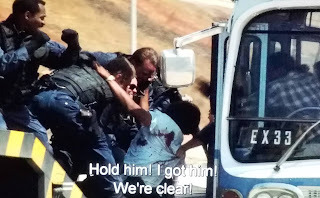
The film's standout moment is the major obstacle for the bus to overcome when it encounters a stretch of unavoidable highway under construction and missing a hearty chunk of the road. Traven’s solution is that since that stretch of a road is on an incline, they may clear that gap if they build up enough speed! That epic stunt hits all the right notes, and I got goosebumps all over again re-watching it, and odds are, I bet you did too if you have seen this movie. If you have not, then watch this scene and see for yourself by click or pressing here. A lot of the critical discussion in the aftermath of this movie was if that jump was realistically possible. The best thing I can do is to compare it to another film, Road Trip, which is likely a better indicator of what could happen when attempting such a feat.
Once the middle bus portion of the film is over, there are still about 20 minutes left where Traven tracks and chases down Payne in a subway station. The movie felt over once the bus portion had such a satisfying conclusion that it almost feels wrong to keep sticking with the film by this point, but I recommend you do since there is a satisfying payoff in the form of Payne’s demise. I have to share a story now when I first saw this film at around 13 or 14 on VHS. My dad’s VCR had what seemed to me at the time was a revolutionary feature where if I kept pressing the pause button repeatedly, it would slowly, frame-by-frame, play the film in super slow-motion. At that age, I thought this was a fantastic way to get the most out of the biggest stunts in action scenes. My favorite moment exploiting this feature was seeing Traven and Payne wrestle around on the top of a subway train until Payne was not watching his field of vision, and a warning light lead to his sudden beheading. I slow-motion replayed that sequence countless times in my awkward, early teenage years. Suffice it to say, Hopper plays the out-of-his-mind bomber perfectly, going so far as to make sure he receives his appropriate cinematic comeuppance.


The director ensures the many passengers on the bus maximized their minutes to the point I where it feels like you are right there with them!

Two audio commentaries are the only extra features of the 4K disc in this 4K/BluRay combo pack. One is with the director, Jan de Bont, and the other is with producer Mark Gordon and writer Graham Yost. Props are to whoever decided to subtitle the commentary tracks. I very much appreciate it! I first started to bounce back and forth between the two commentary tracks, but Bont was way too relaxed and had too many pauses to hold my attention, and I finished up with his track within five minutes. However, Yost and Gordon are very much engaged from beginning to end and have fun cracking jokes and sharing memories throughout. Some quick takeaways I got from them were how they wanted to film a major scene outside of a sports arena, dealing with critics poking holes at how unrealistic their stunts were, and how watching the movie felt very different at the time of the commentary recording just two months after 9/11.
The BluRay disc contains the remainder of the bonus features. Inside Speed is a four-part feature lasting just under an hour breaking down the visual effects, stunts, and location sequences, but half of it also contains an HBO First Look special hosted by Dennis Hopper that hits all the right kinds of cheesy mid-90s EPK nostalgia that it is worth checking out. Aside from 12 minutes of extended scenes and a Billy Idol music video that seems totally off base with the tempo of the film, there are a couple of Action Sequences mini-features breaking down some of the stunts. I highly recommend watching the one dissecting how they did the bus jump, as it shows raw footage of what really happened when they shot it, and showed footage of some of the specific safety measures they instilled to make that stunt as safe as possible and had some eye-opening interviews with the stunt driver before and after.

After watching that old VHS copy nearly a dozen times, Speed wound up being one of my favorite action films I got burnt out early on and never bothered upgrading to a DVD or standalone BluRay. Watching it again in 4K all these years later breathed new life into it for me. I am not an expert at breaking down video quality by any means, but watching the 4K disc on my 4KTV gave the impression of this having far more current production values. The editors somehow managed to remove all the old film grain defects for a smooth 4K upgrade. If you have not seen Speed yet, then it has everything you could want out of a mid-90s action movie with explosions, gripping thrills and stunts, dramatic rescues, plenty of zinger one-liners…..and a Billy Idol theme song. Pardon me while I attempt my best Dennis Hopper impression here, “Pop quiz, hotshot, which 1994 blockbuster that takes place primarily on a bus is a perfect candidate for beer and popcorn movie night at home?”
Other Random Backlog Movie Blogs
3
12 Angry Men (1957)
12 Rounds 3: Lockdown
21 Jump Street
The Accountant
Angry Video Game Nerd: The Movie
Atari: Game Over
The Avengers: Age of Ultron
The Avengers: Endgame
The Avengers: Infinity War
Batman: The Dark Knight Rises
Batman: The Killing Joke
Batman: Mask of the Phantasm
Batman V Superman: Dawn of Justice
Bounty Hunters
Cabin in the Woods
Captain America: Civil War
Captain America: The First Avenger
Captain America: The Winter Soldier
Christmas Eve
The Clapper
Clash of the Titans (1981)
Clint Eastwood 11-pack Special
The Condemned 2
Countdown
Creed I & II
Deck the Halls
Detroit Rock City
Die Hard
Dirty Work
Dredd
The Eliminators
The Equalizer
Faster
Fast and Furious I-VIII
Field of Dreams
Fight Club
The Fighter
For Love of the Game
Good Will Hunting
Gravity
Grunt: The Wrestling Movie
Guardians of the Galaxy
Guardians of the Galaxy Vol 2
Hell Comes to Frogtown
Hercules: Reborn
Hitman
I Like to Hurt People
Indiana Jones 1-4
Inglourious Basterds
Ink
The Interrogation
Interstellar
Jay and Silent Bob Reboot
Jobs
Joy Ride 1-3
Justice League (2017 Whedon Cut)
Last Action Hero
Major League
Mallrats
Man of Steel
Man on the Moon
Man vs Snake
Marine 3-6
Merry Friggin Christmas
Metallica: Some Kind of Monster
Mortal Kombat
Mortal Kombat Legends: Scorpions Revenge
National Treasure
National Treasure: Book of Secrets
Nintendo Quest
Not for Resale
Old Joy
Payback (Director’s Cut)
Pulp Fiction
The Punisher (1989)
The Ref
The Replacements
Reservoir Dogs
Rocky I-VIII
Running Films Part 1
Running Films Part 2
San Andreas
ScoobyDoo Wrestlemania Mystery
Scott Pilgrim vs the World
The Secret Life of Walter Mitty
Shoot em Up
Slacker
Skyscraper
Small Town Santa
Steve Jobs
Source Code
Star Trek I-XIII
Sully
Take Me Home Tonight
TMNT
Trauma Center
The Tooth Fairy 1 & 2
UHF
Veronica Mars
Vision Quest
The War
Wild
The Wizard
Wonder Woman
The Wrestler (2008)
X-Men: Apocalypse
X-Men: Days of Future Past
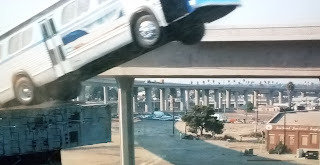
#random movie#speed#keanu reeves#Sandra Bullock#jeff daniels#dennis hopper#glenn plummer#jan de bont
4 notes
·
View notes
Photo
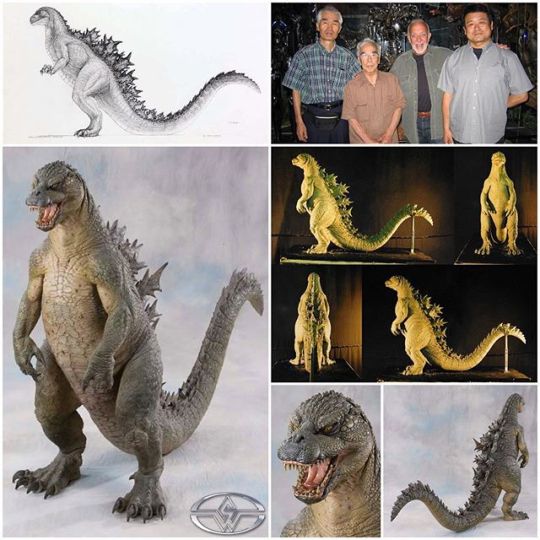
Learn from the artists who made this beauty! Online Courses with Hollywood's Master FX Artists. FREE 7-Day Trial: LINK IN BIO! . Images: Stan Winston Studio's unused American Godzilla design from 1994. Concept art by Mark 'Crash' McCreery. . In 1992, Toho sold the rights to produce an American Godzilla film to Sony Pictures Entertainment, who assigned the project to its newly-acquired subsidiary, TriStar Pictures. Terry Rossio and Ted Eliott were brought in to write a script for the film, which was completed in 1994. TriStar was satisfied enough with the screenplay to begin searching for directors. The screenplay caught the attention of director Jan De Bont after he had just finished directing the hit film Speed. De Bont originally wanted a budget of $100-$120 million for the film, but Sony and TriStar's executives were unwilling to place that much money into the project, eventually forcing De Bont to leave the project and sending Godzilla into development hell. Various writers were brought in to perform rewrites to try and reduce the projected budget, but the difficulties scared away several potential directors. . Stan Winston Studios was contracted to create the special effects for the film, even producing various maquettes and props for the unmade film. Additionally, a teaser trailer for the 1994 film was released in Japan (Via Gojipedia). . #americangodzilla #akinoritakagi #stanwinston #stanwinstonstudio #stanwinstonschool #swsca #godzilla #concept #90s #tristarpictures #design #crashmccreery #drawing #concept #conceptart #ゴジラ #Gojira https://ift.tt/2urazBS
48 notes
·
View notes
Link
Pathé Tuschinscki Amsterdam was gisteravond “the place to be” voor iedereen die meer wil begrijpen van de “Big Picture”. Een 1,5 uur durende documentaire van Nederlandse bodem ging voor een select gezelschap in première in de vorm van de sneak preview, omlijst door een kleurrijk programma, dat gehost werd door programmamaker Flavio Pasquino. Sietske Bergsma ging op pad met een cameraman om een mooie impressie te maken van de avond. Er wordt hard gewerkt aan de montage van de sneak preview dus heb nog even geduld…binnenkort is ie te zien.
De makers
Producent Jean-Jacques van Bemmel (Docsfair) en regisseuse Belgin Inal waren tot het laatste moment nog druk met de afwerking van de film. Belgin was zelfs zo druk dat ze geen tijd had voor interviews of pers tot op de avond zelf. Gelukkig kregen we de getalenteerde cineast wel nog voor de camera want Sietske was volhoudend bij de cameraschuwe filmmaker. Jean-Jacques spraken we wel al uitgebreid in aanloop naar de sneak preview en het interview met hem is HIER te zien.
Bijzondere gasten
Er was een select gezelschap aanwezig en dat had alles te maken met de beperkingen die de overheid heeft opgelegd aan zalen en bioscopen. Slechts 40 man mochten naar binnen in zaal 2 en dat oogde dus best een beetje leeg maar de pret was er niet minder om. Met een bonte club aan artsen, politici, burgerbelangenorganisaties en wetenschappers kon de 1,5 uur in alle rust bekeken worden. Naast reeds bekende mensen uit het kritische debat zoals Wybren van Haga, Gideon van Meieren, Bob de Wit en Jan Huurman slaagden de makers er ook in om vers bloed toe te voegen aan de film. Diverse mensen uit het Redteam waren te zien en ook Twan Houben was een verrassing. Laatstgenoemde gaf een boeiende interpretatie t.a.v. het roemruchte boek van Prof.dr. Klaus Schwab dat gaat over de Great Reset.
Evenwichtig verhaal
Wat wellicht het meest bijzonder aan de docu is, is dat het geen antivaxx film is en eigenlijk een heel evenwichtig verhaal. Zowel voor- en tegenstanders van het beleid en de vaccinatiestrategie kwamen aan het woord en daarmee is de film toegankelijk tot een breed publiek. Een echte aanrader dus om samen met iemand te kijken die jouw mening niet deelt.
Donaties
De makers hebben de kosten voor de film zelf voorgeschoten en hebben daarmee een fors risico genomen. Dat is moedig en daarom willen wij er alles aan doen hun schade te beperken. Wij ondersteunen dit project voor 100% en hopen dat jij een kleine bijdrage kunt missen om de pot te spekken. Want deze mensen moeten dit kunnen blijven doen en hun moed mag best beloond worden.
#blckbx#flavio pasquino#Wybren van Haga#gideon van meijeren#fvd#coronavirus#globalisme#staatsgreep#big tech
0 notes
Text
The Cradle of Life Experience Was So Bad, It Make Jan de Bont Quit Directing
The Cradle of Life Experience Was So Bad, It Make Jan de Bont Quit Directing
[ad_1]
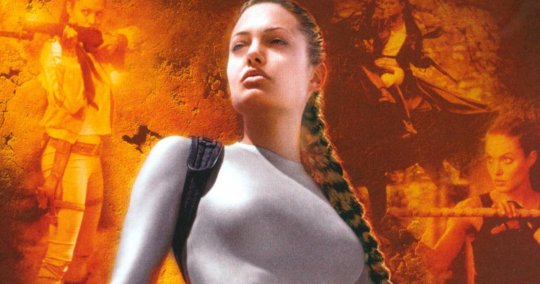
Ever since bursting onto the Hollywood scene in the 1980s, Dutch cinematographer, director, and film producer Jan de Bont has been a part of many iconic movies, in the capacity of cinematographer, on Die Hard and Basic instinct, and as a director on Speed and Twister. In an interview with Uproxx, de Bont revealed that despite his years of experience, his time directing the 2003 movie Lar…
View On WordPress
0 notes
Text
‘Tomb Raider: The Cradle of Life’ Experience Was So Bad, It Make Jan de Bont Quit Directing
‘Tomb Raider: The Cradle of Life’ Experience Was So Bad, It Make Jan de Bont Quit Directing
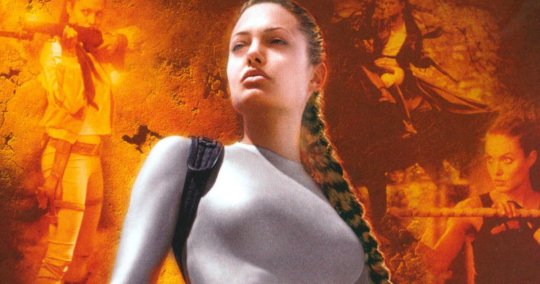
Ever since bursting onto the Hollywood scene in the 1980s, Dutch cinematographer, director, and film producer Jan de Bont has been a part of many iconic movies, in the capacity of cinematographer, on Die Hard and Basic instinct, and as a director on Speed and Twister. In an interview with Uproxx, de Bont revealed that despite his years of experience, his time directing the 2003 movie Lara Croft…
View On WordPress
0 notes
Text

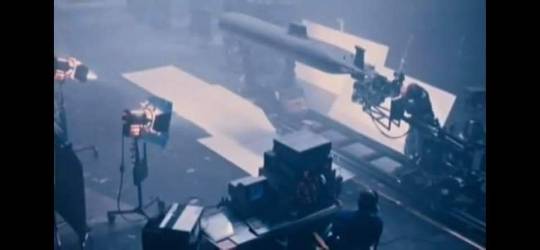
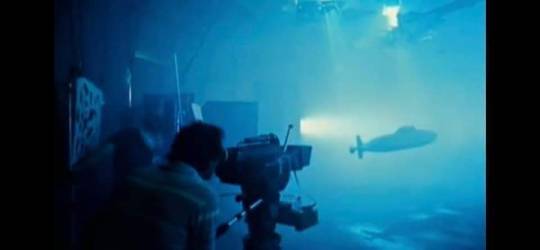


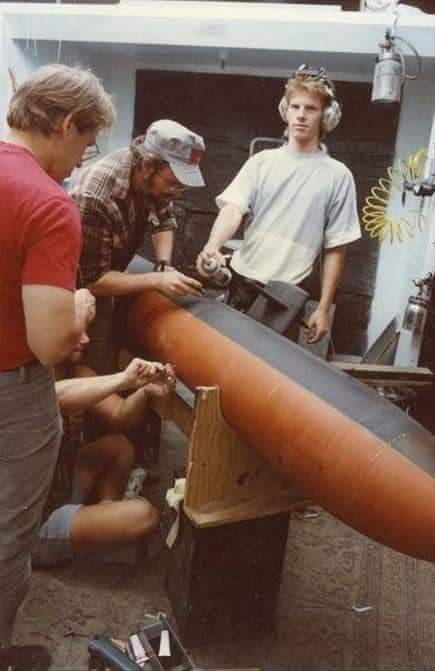
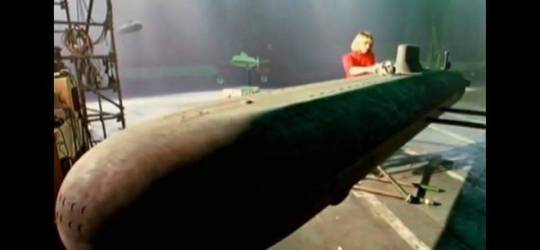

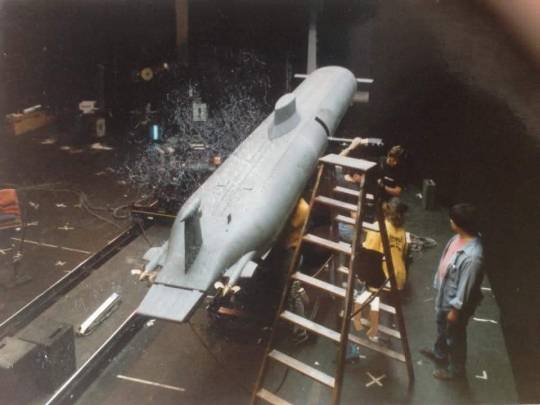
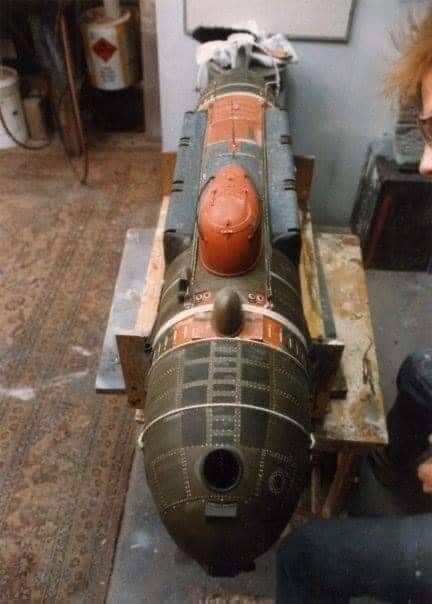
On this date in 1990 “The Hunt For Red October” was released!
Capt. Borodin: “The crew know about the saboteur. They are afraid.”
Marko Ramius: “Well, that could be useful when the time comes.”
Director:John McTiernan
1st AD:Jerry Ballew
Cinematographer:Jan de Bont
Camera operator:Roger Gebhard
1st AC:Cal Roberts
Production Designer:Terence Marsh
Gaffer:Ed Ayer
Key grip:Larry J. Aube
Dolly grip: Michael J. Coo
This is one of my favorite movies so today we’re going on a deep Dive! Dive! Dive! on how this group of dedicated filmmakers brought this movie to life.
The producers originally wanted Kevin Costner for the lead, but Costner had other ideas.
As producer Mace Neufeld explained in a behind-the-scenes DVD feature, "I'd gotten quite friendly with Kevin Costner, and I went to Kevin about playing Jack Ryan. But Kevin was up to his neck, and very enthusiastic, about doing this ... this buffalo movie. And I said, 'You'd rather do a buffalo movie?'".
This was Alec Baldwin’s first big budget starring role throwing himself face first into the role spending time with C.I.A agents and spending the night 600’ underwater in a submarine. He also recommended he personally do the helicopter drop into the ocean. Baldwin accepted the role of Jack Ryan because Harrison Ford turned it down. Cast member Sam Neill also benefited from Ford's refusal three years later by being cast in the lead role of Jurassic Park (1993). Interestingly, Baldwin asked for a big pay increase for the sequel, to which the producers allegedly replied, "For that price, we could get Harrison Ford." Baldwin held his ground and the studio agreed to the fee, but for Ford instead of Baldwin for “clear and present danger”
Sean Connery was a last-minute replacement. The film had been in production for two weeks when word came that Klaus Maria Brandauer (Out of Africa), the Austrian actor who'd been signed to play the rogue Soviet sub commander Marko Ramius, couldn't do it after all because of a prior commitment. Connery took the part instead, needing only one day for rehearsal. Coincidentally, he and Brandauer had acted together in 1983's “Never Say Never Again” and would reunite again for 1990's “The Russia House”, which was shot shortly after The Hunt for Red October.
Mancuso: The hard part about playing chicken is knowin' when to flinch.
"I had reservations about it," Connery told an Associated Press reporter upon the film's release. "I thought this kind of Cold War intrigue might be dated because of recent events(the fall of the U.S.S.R). It turned out that the studio had failed to fax the first page of the script, which explained that it took place before Gorbachev." This is probably why no one ever uses fax machines anymore. After being faxed the script, Sir Sean Connery initially turned the role down on the basis of the plot being unrealistic for the post-Cold War era. Whoever sent the fax neglected to include the foreword, explaining the movie as historical. Once he received the foreword, Connery accepted the role.
After consulting with the hair department behind director John McTiernan's back, Sir Sean Connery arrived on-set for his first day of principal photography with his hairpiece incorporating a ponytail. Several years later, once Connery's potential influence had greatly waned, McTiernan stated in an interview with Sight & Sound Magazine that he was "f---ing livid" with Connery, and that the Scottish actor tried to use his considerable heft with the studio, going over the director's head to pass the alteration with producers. It seemed as though Connery was to get his way until midway through the second day's shooting, when director of photography Jan De Bont started laughing while reviewing the dailies, remarking to Connery that his ponytail looked like "a limp, swinging d--k." This soon became a meme among the crew, and by the end of the second day, Connery was so upset at the mockery, he relented, having the hair department remove the alteration and forcing the re-shoot of a key scene. McTiernan joked that the reported cost of the hairpiece, approximately $20,000, was mainly down to the cost of those subsequent re-shoots.
Jeffrey Pelt: “Listen, I'm a politician, which means I'm a cheat and a liar, and when I'm not kissing babies, I'm stealing their lollipops, but it also means that I keep my options open.”
Screenwriter Larry Ferguson played the role of C.O.B. [Chief (Petty Officer) of the Boat] on the U.S.S. Dallas. He didn’t know he had been cast till he saw his name on the cast list and quickly hired an acting coach having not acted in over 16 years, he quickly started rewrites giving his character more screen time.
The film got an uncredited rewrite—including all of the Russian dialogue—from veteran filmmaker John Milius. The writer of “Apocalypse Now”, and director of “Conan the Barbarian”, and “Red Dawn”—who had directed Connery in 1975's “The Wind and the Lion”—told an interviewer in 2003 that the rumors of his involvement with The Hunt for Red October were true. He said he added speeches for Connery's character ("Make it about me," the actor supposedly told him), and that he "wrote all of the Russian stuff—everything that's Russian in that movie."
In one of the most clever ways I’ve seen a movie ditch the subtitles, this film begins with the actors speaking Russian with English subtitles. As the camera slowly dollies to the mouth of actor Peter Firth he casually switches in mid-sentence from Russian to English on the word "Armageddon", which is the same spoken word in both languages. After that point, the Soviets' dialogue is communicated in English.
During filming, several of the actors portraying U.S.S. Dallas crewmen took a cruise off the coast of San Diego on the USS Salt Lake City (SSN-716) a real Los Angeles-class submarine. To train for his role as the Dallas' commander, Scott Glenn. The real commander Thomas Fargo of the Salt Lake City ordered his crew to treat Glenn as equal rank, first giving reports to him, then give the same report to Glenn. Glenn based his performance of Mancuso on Commander Fargo, giving orders in a calm even voice, even in tense situations, saying "whatever good happened in the performance, basically I owe to now Admiral Fargo, thank you sir."
Made before sophisticated CGI became the norm in filmmaking, the film's opening sequence featured a long pull-out reveal of the immense titular Typhoon-class sub. It included a nearly full-scale, above-the-water-line mockup of the sub, constructed from two barges welded together. Since they didn’t have permission to go out to open ocean they were forced to shoot in Long Beach harbor to create the wake of the open ocean they had boats circling the barge to create waves.
Production designer Terence Marsh and Cinematographer Jan de Bont didn’t want to confuse the audience so they gave each country's submarine its own background color: Soviet submarines, such as Red October and V.K. Konovalov, had interiors in black with chrome trim. American ships, such as Dallas and Enterprise, had grey interiors. To help the audience quickly grasp which sub's interior they were seeing as the movie jumped from scene to scene and sub to sub, the filmmakers also created a subtle lighting scheme: blue for Red October, green for the Alfa class "V.K. Konovalov", and red for Dallas.
During filming in 1989, the U.S.S. Houston, which doubled for the U.S.S. Dallas in the movie, snagged the tow cable between the commercial tugboat Barcona and a barge, sinking the tugboat ten miles off Long Beach, California. One crewman unfortunately drowned, and two more were rescued.
On stage for the sub interiors two 50-square-foot (4.6 m2) platforms housing mock-ups of Red October and Dallas were built, standing on hydraulic gimbals that simulated the sub's movements. Connery recalled, "It was very claustrophobic. There were 62 people in a very confined space, 45 feet above the stage floor. It got very hot on the sets, and I'm also prone to sea sickness. The set would tilt to 45 degrees.
I asked the Dollygrip on the film and crew stories member Micheal Coo about his experience on the and he shared this with us.
“ I’ve got a story for you...
We were shooting in a real submarine and doing a tracking shot down a long corridor. Now about every 15 feet is a bulkhead that you have to step over and make sure you don’t hit your head on the top. We are tracking on a peewee dolly, raised up on track to clear the bulkheads, chasing Sean Connery down the corridor. While chasing Sean, Jan Debont yells cut cut cut, and stands up. There’s no way I could stop on a dime and Jan stood up right before one of the bulkheads. He hit his head so hard he flew over the top of me and I went under him with the dolly. His head sounded like a church bell ringing in the submarine. Since Jan Debont and Sean Connery didn’t get a long so well Sean laughed his ass off at Jan laying there on the floor saying “Fucking Hell Shit Michael, I said cut!!!”
The miniature “underwater” scenes were shot and built by I.L.M and the talented model makers from BOSS films Gregory Jein, John Eaves, Ron Gress and Alan McFarland, they filmed using smoke to simulate underwater with a model sub connected to a 12 cable marionette style frame, giving precise, smooth control for turns the same technique was used for the robot aliens in the film “Batteries not included”. To get the lens to “scrape the paint” of the model to make it feel life sized the crew used mirrors lined up perfectly and the camera lens shoot into the mirror getting the image much closer then it would have been possible for the camera. With Computer generated effects, in their infancy, cgi was used for creating bubbles and other effects such as particulates in the water.
Navy recruiters set up booths in some theater lobbies for people to sign up to join the service, or to at least look into it. The Pentagon hoped that this movie would do for the submarine service what Top Gun (1986) did for Naval aviation.
When the movie was first released on VHS in 1991, the tapes were red.
Capt. Marko Ramius: I'm reminded of the heady days of Sputnik and Yuri Gagarin when the world trembled at the sound of our rockets. They will tremble again at the sound of our silence. The order is engage the silent drive.
If you can help identify any crew members please comment, thanks for reading
Via Diego,IMDb, YouTube,MCGA. Special thanks to Dolly Grip on the film Michael Coo and miniatures paint expert Bruce Hazumi
2 notes
·
View notes
Text
Van Halen's initial 11-year association with Sammy Hagar ended slowly, and then all at once.
Sessions for “Humans Being,” a single released in April 1996 from the soundtrack to the big-budget disaster movie Twister, had devolved into he said/he said quibbling before everything exploded into a huge argument during a June phone call with Eddie Van Halen.
The band was coming off a lengthy tour in support of their fourth chart-topping studio album, 1995’s Balance, but the mood was hardly celebratory. This trek was so injury-plagued that it was nicknamed “The Ambulance Tour”: Growing pain in Eddie's hip, three ruptured vertebrae in Alex Van Halen's neck, and Hagar’s throat issues had led to a handful of rescheduled dates.
"We needed time off from each other after our last tour, because there was a lot of personal stuff we had to take care of,” Hagar told Guitar World in 1997, adding that there were a variety of reasons for slowing down over the first half of the new year. “Eddie needed hip replacement surgery. Al needed his back worked on. And I was going to have a baby. … We needed to regroup and retool ourselves before we hooked up again for a new album.”
New-ish manager Ray Danniels had other ideas, and brought the Twister opportunity to Alex and Eddie, who reached out to Hagar in early 1996 about doing a song or two for the soundtrack. They said they were expecting him to turn it down since he was newly married to his second wife Kari, and the couple had just moved to Hawaii in anticipation of having their first child together.
youtube
“To my surprise, Sam committed, while he was in Hawaii with a pregnant wife and soaking up the sun,” Eddie told the Album Network. “We had the tracks – done – six weeks before we could get him out here to sing. I kept saying, ‘Sam, why did you commit to this if you don’t want to do it?’ And he said to me, ‘Why is this so damn important to you?’ And I just went, ‘What?’”
Alex added: “Because we make music – that’s why,” laughing. “Yeah, it’s my life,” Eddie said. “All you had to say was, ‘Hey, I’m not into it.’”
“I was not down with it,” Hagar said in Red: My Uncensored Life in Rock. “All they wanted was to get me off the island. Ray Danniels would be on the phone saying things like, ‘If you’re not back tomorrow, we’re assuming that you’ve quit the band.’”
There were more bumps in the road ahead. For instance, Twister director Jan de Bont apparently told the Van Halen brothers that he didn’t want any songs about tornados.
“And so what does Sammy come back with? ‘Sky is turning black, knuckles turning white, headed for the hot zone,’” Eddie told Guitar World in 1996. “It was total tornado stuff! Not only did Alex tell him not to do that, but the director of the fucking movie told him, ‘Do not write about tornadoes.’”
The opposite was true, according to Hagar. He said de Bont loved a demo cut remotely in Hawaii called “Drop Down,” and even provided “300 pages of technical weather terms that tornado chasers use.” Still, Hagar said the Van Halens “freaked out,” were overly critical of his lyrics and subject matter, and demanded he leave the island – as well as his pregnant wife – to come to 5150 Studios to work on the tracks in person.
They ended up recording a heavy, dark and moody number, “The Silent Extreme” which was rechristened “Humans Being,” a title Alex had kicking around during the Balance tour. The lyrics were written by Hagar and producer Bruce Fairbairn while a second song, the ballad “Between Us Two,” was completed.
Hagar said he was preparing to leave the studio to catch a plane, after having gone back and forth to Hawaii multiple times, when the band informed him that the producers of Twister no longer wanted to use the ballad. Instead, they now were asking for an additional minute and a half of music tacked onto “Humans Being.” Needing to be at the airport in a couple hours, a frustrated Hagar finally acquiesced – but continued pleading with Eddie to come up with enough to round things out.
“He wanted me to chant something like, ‘Bah, bah, bah. I hate this, I hate that, you dirty rat.' I looked at Eddie and told him that sucked. He just said, ‘Well, do something. All they need is a minute and a half; otherwise, we'll just make an instrumental out of it. Bruce told me that all we needed was 16 words, two verses, and the song would be complete,’ I said okay and came up with this line: ‘There is just enough Christ in me to make me feel almost guilty. Is that why God made us bleed, to make us see we're humans being?’ I wrote those verses in about 10-15 minutes on the hood of a car with Bruce. It was so cheeseball, the way it was done. We wrote the lyrics, I sang the song in three parts in about an hour and a half and split.”
Their haste in extending “Humans Being” was revealed in double-tracked vocals done exclusively by Eddie, without Michael Anthony providing the usual harmony. Still, none of it took away from the success of “Humans Being,” which went to No. 1 on the Rock/Mainstream Rock chart – the band’s 11th in a row. The track also helped propel the Twister soundtrack to a respectable debut at No. 37 on the Billboard 200, where it ultimately topped out at No. 28.
Van Halen's accompanying video tied into the movie directly, with footage of the group performing on a soundstage intercut with scenes from Twister. In retrospect, it wasn’t a stretch to speculate that very little acting was taking place when Hagar and Eddie are seen yelling the lyrics at one another with their faces just inches apart.
youtube
Van Halen and their wives – along with Hagar’s new baby Kama – were all smiles on May 8, 1996 at the film's premiere. Some six weeks later, however, Hagar was out. It was soon revealed that David Lee Roth would be returning to the fold, but that became a twisted mess in its own right.
#van halen#eddie van halen#michael anthony#sammy hagar#alex van halen#1996#humans being#twister#news#ultimate classic rock#2021#Youtube
4 notes
·
View notes
Text
First Take Classics: Basic Instinct- the movie that made pausing VHS tapes a big thing
SYNOPSIS: A violent police detective investigates a brutal murder that might involve a manipulative and seductive novelist.
During the recording of a Talking Smit episode a few weeks back, one of our many executive producers kind of provoked me into reviewing this movie. He claimed that there were *some* positives to be found in the 1992 movie that stunned the world. I can agree with him in some aspects, but damn, this movie hasn’t aged that well.
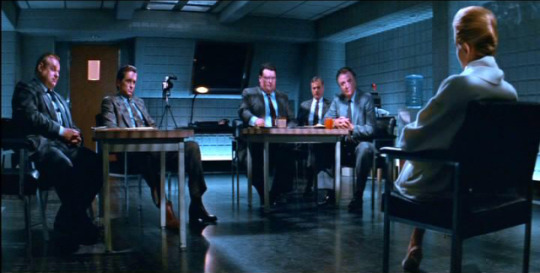
Paul Verhoeven is director on this one, and working to a script from Joe Ezsterhas, the two are able to make a 2 hour 7 minute film that just about works, but has elements that are quite firmly stuck in the 1990s. Archetypical characters, a hell of a lot of exposition, and of course, the 18 certificate worthy moments don’t really work well together in practice, but somehow they are able to pull it off. Behind the camera is Jan de Bont (who 7 years later would direct a version of The Haunting that was bettered by a group of students on not even 1% of the budget), and ever he does some good work, but it is really Jerry Goldsmith’s score that makes this movie come alive.

As for the cast, Michael Douglas and Sharon Stone are two very likable leads, and supporting them is Jeanne Tripplehorn, Bruce Young and many more, but watching this nearly 30 years on, it is difficult to see how this film appealed to cinemagoers aside from the now infamous sequence that legitimately got one of our podcasts blocked on YouTube. It’s become a film that has grabbed the attention of customers for all the wrong reasons.
THE VERDICT
It may look and feel like a film made in the 1990s, but if Basic Instinct hadn’t been a success, films like Gone Girl would never have been greenlit over 20 years later. Love it or hate it, this film changed Hollywood’s perception of the 18 certificate forever.
RATING: 3.5/5
0 notes
Link
... because Reeves is the star, he has no equal.
Sep 18, 2017
To the surprise of absolutely no one, Lionsgate has announced and slotted John Wick: Chapter Three. The third entry in the accidental franchise is now slated for May 17, 2019.
I’ve always said that the weekend before Memorial Day is among the very best on the calendar, offering the potential for a big opening and then a solid holiday hold. Yes, last summer had Alien: Covenant, which was the least leggy such offering in recent history, but the slot has seen the likes of all four Shrek movies, all three Star Wars prequels, The Matrix Reloaded and Mad Max: Fury Road. So, yeah, Lionsgate watched Star Wars 9 ditch the Memorial Day opening weekend and saw an opening.
If we argue that a franchise grows bigger in stature by virtue of its release dates, then John Wick has been promoted yet again. The first installment was a genuine buzzy sleeper in October 2014. So, the sequel got a more high-profile launching pad over this past President’s Day weekend. We’ll see if the franchise peaked at part II (like Scream or Pirates of the Caribbean) or whether it builds on the third shot (or potentially goes crazy like Goldfinger or Skyfall.
Maybe the answer is somewhere in-between, but John Wick is now the rarest of things, an explicitly star-driven franchise. The success of John Wick is very much about the ongoing and periodically regenerated star power of one Keanu Reeves. Mr. Reeves is arguably the most successful movie star of the modern age in terms of creating wholly original and sequel-friendly franchises.
Gallery
The World's Highest-Paid Actors 2017
Launch Gallery
24 images
Sure, we can talk about his famous philanthropy, his understated and often underappreciated acting, his “sad Keanu” memes, or the fact that he apparently drank from Tuck’s well in the early 1980s and thus will never age. But what’s most impressive is that Reeves’ stardom persists in this IP/franchise-driven era. The secret is that the reclusive and philosophical actor has made a habit of creating a new iconic cinematic character on an almost generational basis.
Depending on how old you are, you may have discovered Reeves in the late 1980s with Bill and Ted’s Excellent Adventure, where he so exquisitely played a good-hearted airhead that said characterization stuck as a kind of offscreen typecasting for decades. Or maybe you first saw the actor in Kathryn Bigelow’s Point Break, where overeager and exasperated FBI agent Johnny Utah and Patrick Swayze’s guru surfer bank robber essentially invented the testosterone-fueled bromance. It wasn't a big hit, but it spawned a remake, a satirical stage play (Point Break Live) and a loose rip-off that spawned a rather fast and furious eight films-and counting franchise.
Or maybe you discovered (or rediscovered) Reeves via Jan De Bont’s action classic Speed, which turned his onscreen kamikaze airhead reputation on its head for what amounted to a cheerful, well-mannered action hero. The film was slightly ahead of its time in casting a somewhat unconventional actor as its muscular action lead. It was a new trend begun by Die Hard and Batman and made mainstream when Nicolas Cage cashed in on his Oscar win to make The Rock, Con Air and Face/Off in the mid-1990s.
Reeves’ blockbuster action hit, which turned Sandra Bullock into a leading lady, kept Reeves’ name in good graces as he dabbled in smaller films and quirkier projects like A Walk in the Clouds, Feeling Minnesota or The Devil’s Advocate. While Reeves has long specialized in understated dramatic turns (not unlike Harrison Ford or Kevin Costner), Taylor Hackford religious melodrama/gonzo comic thriller, which gave us Charlize Theron, is a rare occasion where Keanu Reeves delivered a terrific over-acted performance. He held his own against a peak-ham Al Pacino.
But just as Reeves’ star was fading, he gave us a new iconic cinematic character for a new generation in the guise of Thomas Anderson. You may know him as Neo, but The Matrix was one of the most influential major studio releases of our time, and the Wachowskis’ mind-bending cyberpunk action trilogy became Reeves’ biggest grossers here and abroad. And whether they acted as a gateway drug for younger would-be Reeves fans or served to reignite the fandom born of Bill and Ted’s Excellent Adventure, Point Break and Speed, The Matrix gave Reeves yet another defining and iconic cinematic character to call his own.
By the time the Matrix franchise wrapped up in late 2003, the industry was starting to do away with outright star vehicles, especially those not based upon prior source material. So, it’s no surprise that Reeves’ two big hits in the mid-to-late 2000s were Constantine (a loose adaptation of the DC Comics title Hellblazer) and The Day The Earth Stood Still (a remake of a classic 1950’s sci-fi drama). Both films earned around $230 million worldwide on budgets of $100m and $80m respectively. Fun fact: Until Wonder Woman, Constantine was the biggest DC Comics adaptation without Batman or Superman ever.
The post-Matrix 2000’s offered a few small-scale winners (I will defend Reeves and Sandra Bullock’s The Lake House, a moving meditation on adult loneliness, unto death) and worthwhile indie films (Thumbsucker, The Private Lives of Pippa Lee, etc.), but the mainstream stuff (Street Kings, 47 Ronin) didn’t stick. Even the actor admits that the phone stopped ringing as much, although he did produce and narrate a terrific documentary (Side by Side) about digital video versus conventional film stock and direct the delightfully entertaining Man of Tai Chi.
And on paper, John Wick probably looked like a somewhat lower-rung, glorified VOD actioner better suited to Bruce Willis or Scott Adkins, a kind of “Oh, I guess Keanu Reeves is making a Taken knock-off” grindhouse offering. But the stylized and stylish actioner, starring Reeves as a retired hitman drawn back into the fray after Russian mobsters kill his newborn puppy, was a rarity. It was a genuine, under-the-radar sleeper hit.
The picture, directed by Chad Stahelski and David Leitch, was picked up by Lionsgate less than three months prior to its eventual late-October 2014 release and turned into a genuine mainstream hit. Thanks to good reviews, strong buzz and a solid marketing campaign that treated the film as a generational coronation for the occasionally underappreciated movie star, the picture vastly overperformed its pre-release tracking estimates, opening with $14 million and legging it to $43m domestic and $88m worldwide on a $30m budget.
That’s not a king’s ransom, but the picture, which played off Reeves’ star persona as a Zen-like man of action (and the fact that he had been somewhat MIA from mainstream movies), became an instant genre favorite and would-be cult classic. It was a big post-theatrical hit and John Wick: Chapter Two opened this past February as a true breakout sequel with a $30 million debut weekend for an eventual $92m domestic and $171m worldwide gross on a $40m budget.
The John Wick franchise is rooted in the idea of seeing Keanu Reeves specifically as John Wick, specifically because of Reeves’ performance and how the character plays off his persona. And that applies to all his defining characters, from Ted to Neo to Wick. Plenty of actors have one or two iconic/defining cinematic characters to their credit. Reeves has at least four (Bill and Ted’s Excellent Adventure, Speed, The Matrix and John Wick) and possibly five (if you want to count Point Break’s Johnny Utah). Moreover, all of them stemmed from original screenplays sans any attachment to branded content or preexisting source material.
Moreover, all of them stemmed from original screenplays sans any attachment to branded content or preexisting source material. In 2017, Reeves is still around, still relevant, and still creating wholly original cinematic franchise-friendly characters. It would be like if Harrison Ford were still creating new characters as popular as Indiana Jones or Han Solo. Or, it would be like if Hell of High Water or Blackhat did even 25% of what Star Trek or Thor did at the domestic box office.
It is that ability (aside from the whole talent/charisma/professionalism/commitment stuff), to create new characters just often enough to snag new fans and reacquaint himself with older fans that keeps the actor exciting and bankable even in an IP/branded content world. Most actors are lucky to have one iconic character. Some, like Alan Rickman, get two. Keanu Reeves has at least four, all of which are wholly original cinematic creations.
Like Denzel Washington and Leonardo DiCaprio, Keanu Reeves is still a movie star because he remains bigger than the property and can score big bucks and new fans absent any property at all. And unlike any of his peers, he has a knack for embodying wholly original characters that redefine (or reenergize) his stardom right when the wick is about to burn out. And in terms of starring in films that create sequel-friendly franchises, franchises that succeed specifically because Reeves is the star, he has no equal.
Thanks to mr-reeves.com !
32 notes
·
View notes
Text
‘Twister’ Reboot Announcement Surprised Original Director Jan de Bont
‘Twister’ Reboot Announcement Surprised Original Director Jan de Bont

Original Twister director Jan de Bont was surprised by the reboot announcement earlier this year. He also doesn’t think the upcoming reboot will work with a bigger tornado. The reboot was announced back in June of this year, though no story specifics were revealed. Top Gun: Maverickhelmer Joseph Kosinski is attached to direct with Frank Marshall on board to produce. At the time of the…
View On WordPress
0 notes
Text

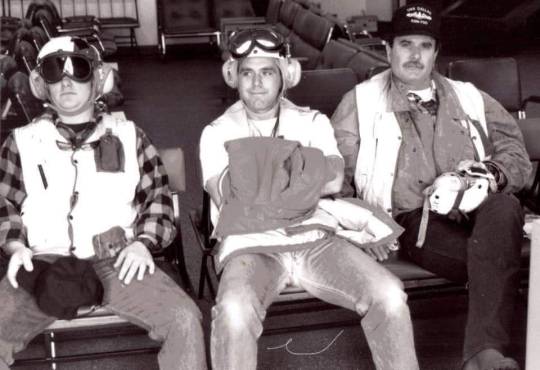

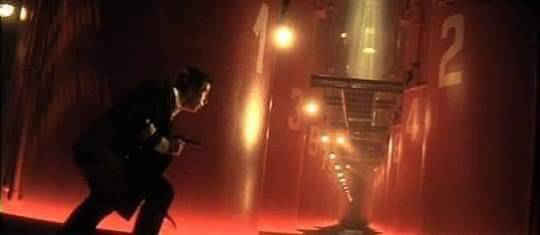



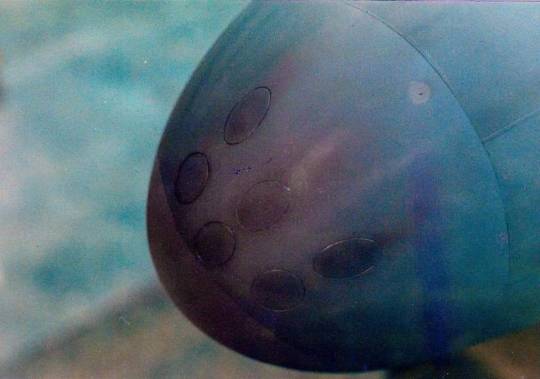
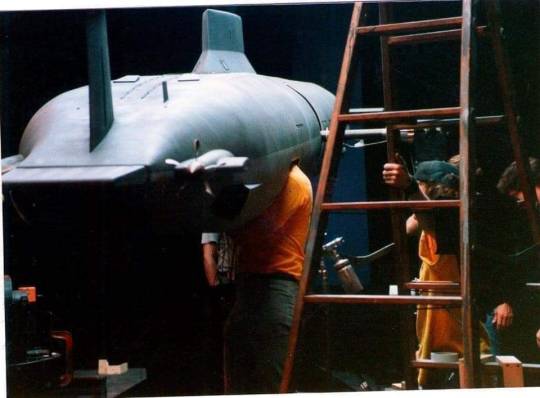
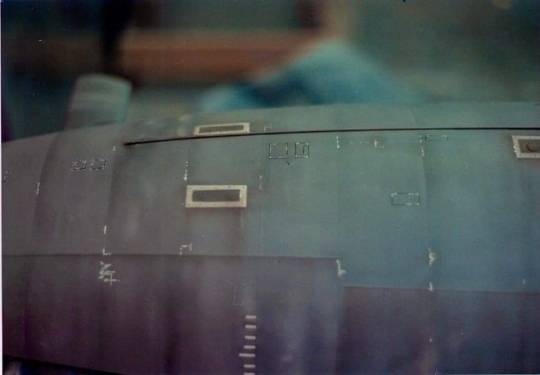
On this date in 1990 “The Hunt For Red October” was released!
Capt. Borodin: “The crew know about the saboteur. They are afraid.”
Marko Ramius: “Well, that could be useful when the time comes.”
Director:John McTiernan
1st AD:Jerry Ballew
Cinematographer:Jan de Bont
Camera operator:Roger Gebhard
1st AC:Cal Roberts
Production Designer:Terence Marsh
Gaffer:Ed Ayer
Key grip:Larry J. Aube
Dolly grip: Michael J. Coo
This is one of my favorite movies so today we’re going on a deep Dive! Dive! Dive! on how this group of dedicated filmmakers brought this movie to life.
The producers originally wanted Kevin Costner for the lead, but Costner had other ideas.
As producer Mace Neufeld explained in a behind-the-scenes DVD feature, "I'd gotten quite friendly with Kevin Costner, and I went to Kevin about playing Jack Ryan. But Kevin was up to his neck, and very enthusiastic, about doing this ... this buffalo movie. And I said, 'You'd rather do a buffalo movie?'".
This was Alec Baldwin’s first big budget starring role throwing himself face first into the role spending time with C.I.A agents and spending the night 600’ underwater in a submarine. He also recommended he personally do the helicopter drop into the ocean. Baldwin accepted the role of Jack Ryan because Harrison Ford turned it down. Cast member Sam Neill also benefited from Ford's refusal three years later by being cast in the lead role of Jurassic Park (1993). Interestingly, Baldwin asked for a big pay increase for the sequel, to which the producers allegedly replied, "For that price, we could get Harrison Ford." Baldwin held his ground and the studio agreed to the fee, but for Ford instead of Baldwin for “clear and present danger”
Sean Connery was a last-minute replacement. The film had been in production for two weeks when word came that Klaus Maria Brandauer (Out of Africa), the Austrian actor who'd been signed to play the rogue Soviet sub commander Marko Ramius, couldn't do it after all because of a prior commitment. Connery took the part instead, needing only one day for rehearsal. Coincidentally, he and Brandauer had acted together in 1983's “Never Say Never Again” and would reunite again for 1990's “The Russia House”, which was shot shortly after The Hunt for Red October.
Mancuso: The hard part about playing chicken is knowin' when to flinch.
"I had reservations about it," Connery told an Associated Press reporter upon the film's release. "I thought this kind of Cold War intrigue might be dated because of recent events(the fall of the U.S.S.R). It turned out that the studio had failed to fax the first page of the script, which explained that it took place before Gorbachev." This is probably why no one ever uses fax machines anymore. After being faxed the script, Sir Sean Connery initially turned the role down on the basis of the plot being unrealistic for the post-Cold War era. Whoever sent the fax neglected to include the foreword, explaining the movie as historical. Once he received the foreword, Connery accepted the role.
After consulting with the hair department behind director John McTiernan's back, Sir Sean Connery arrived on-set for his first day of principal photography with his hairpiece incorporating a ponytail. Several years later, once Connery's potential influence had greatly waned, McTiernan stated in an interview with Sight & Sound Magazine that he was "f---ing livid" with Connery, and that the Scottish actor tried to use his considerable heft with the studio, going over the director's head to pass the alteration with producers. It seemed as though Connery was to get his way until midway through the second day's shooting, when director of photography Jan De Bont started laughing while reviewing the dailies, remarking to Connery that his ponytail looked like "a limp, swinging d--k." This soon became a meme among the crew, and by the end of the second day, Connery was so upset at the mockery, he relented, having the hair department remove the alteration and forcing the re-shoot of a key scene. McTiernan joked that the reported cost of the hairpiece, approximately $20,000, was mainly down to the cost of those subsequent re-shoots.
Jeffrey Pelt: “Listen, I'm a politician, which means I'm a cheat and a liar, and when I'm not kissing babies, I'm stealing their lollipops, but it also means that I keep my options open.”
Screenwriter Larry Ferguson played the role of C.O.B. [Chief (Petty Officer) of the Boat] on the U.S.S. Dallas. He didn’t know he had been cast till he saw his name on the cast list and quickly hired an acting coach having not acted in over 16 years, he quickly started rewrites giving his character more screen time.
The film got an uncredited rewrite—including all of the Russian dialogue—from veteran filmmaker John Milius. The writer of “Apocalypse Now”, and director of “Conan the Barbarian”, and “Red Dawn”—who had directed Connery in 1975's “The Wind and the Lion”—told an interviewer in 2003 that the rumors of his involvement with The Hunt for Red October were true. He said he added speeches for Connery's character ("Make it about me," the actor supposedly told him), and that he "wrote all of the Russian stuff—everything that's Russian in that movie."
In one of the most clever ways I’ve seen a movie ditch the subtitles, this film begins with the actors speaking Russian with English subtitles. As the camera slowly dollies to the mouth of actor Peter Firth he casually switches in mid-sentence from Russian to English on the word "Armageddon", which is the same spoken word in both languages. After that point, the Soviets' dialogue is communicated in English.
During filming, several of the actors portraying U.S.S. Dallas crewmen took a cruise off the coast of San Diego on the USS Salt Lake City (SSN-716) a real Los Angeles-class submarine. To train for his role as the Dallas' commander, Scott Glenn. The real commander Thomas Fargo of the Salt Lake City ordered his crew to treat Glenn as equal rank, first giving reports to him, then give the same report to Glenn. Glenn based his performance of Mancuso on Commander Fargo, giving orders in a calm even voice, even in tense situations, saying "whatever good happened in the performance, basically I owe to now Admiral Fargo, thank you sir."
Made before sophisticated CGI became the norm in filmmaking, the film's opening sequence featured a long pull-out reveal of the immense titular Typhoon-class sub. It included a nearly full-scale, above-the-water-line mockup of the sub, constructed from two barges welded together. Since they didn’t have permission to go out to open ocean they were forced to shoot in Long Beach harbor to create the wake of the open ocean they had boats circling the barge to create waves.
Production designer Terence Marsh and Cinematographer Jan de Bont didn’t want to confuse the audience so they gave each country's submarine its own background color: Soviet submarines, such as Red October and V.K. Konovalov, had interiors in black with chrome trim. American ships, such as Dallas and Enterprise, had grey interiors. To help the audience quickly grasp which sub's interior they were seeing as the movie jumped from scene to scene and sub to sub, the filmmakers also created a subtle lighting scheme: blue for Red October, green for the Alfa class "V.K. Konovalov", and red for Dallas.
During filming in 1989, the U.S.S. Houston, which doubled for the U.S.S. Dallas in the movie, snagged the tow cable between the commercial tugboat Barcona and a barge, sinking the tugboat ten miles off Long Beach, California. One crewman unfortunately drowned, and two more were rescued.
On stage for the sub interiors two 50-square-foot (4.6 m2) platforms housing mock-ups of Red October and Dallas were built, standing on hydraulic gimbals that simulated the sub's movements. Connery recalled, "It was very claustrophobic. There were 62 people in a very confined space, 45 feet above the stage floor. It got very hot on the sets, and I'm also prone to sea sickness. The set would tilt to 45 degrees.
I asked the Dollygrip on the film and crew stories member Micheal Coo about his experience on the and he shared this with us.
“ I’ve got a story for you...
We were shooting in a real submarine and doing a tracking shot down a long corridor. Now about every 15 feet is a bulkhead that you have to step over and make sure you don’t hit your head on the top. We are tracking on a peewee dolly, raised up on track to clear the bulkheads, chasing Sean Connery down the corridor. While chasing Sean, Jan Debont yells cut cut cut, and stands up. There’s no way I could stop on a dime and Jan stood up right before one of the bulkheads. He hit his head so hard he flew over the top of me and I went under him with the dolly. His head sounded like a church bell ringing in the submarine. Since Jan Debont and Sean Connery didn’t get a long so well Sean laughed his ass off at Jan laying there on the floor saying “Fucking Hell Shit Michael, I said cut!!!”
The miniature “underwater” scenes were shot and built by I.L.M and the talented model makers from BOSS films Gregory Jein, John Eaves, Ron Gress and Alan McFarland, they filmed using smoke to simulate underwater with a model sub connected to a 12 cable marionette style frame, giving precise, smooth control for turns the same technique was used for the robot aliens in the film “Batteries not included”. To get the lens to “scrape the paint” of the model to make it feel life sized the crew used mirrors lined up perfectly and the camera lens shoot into the mirror getting the image much closer then it would have been possible for the camera. With Computer generated effects, in their infancy, cgi was used for creating bubbles and other effects such as particulates in the water.
Navy recruiters set up booths in some theater lobbies for people to sign up to join the service, or to at least look into it. The Pentagon hoped that this movie would do for the submarine service what Top Gun (1986) did for Naval aviation.
When the movie was first released on VHS in 1991, the tapes were red.
Capt. Marko Ramius: I'm reminded of the heady days of Sputnik and Yuri Gagarin when the world trembled at the sound of our rockets. They will tremble again at the sound of our silence. The order is engage the silent drive.
If you can help identify any crew members please comment, thanks for reading
Via Diego,IMDb, YouTube,MCGA. Special thanks to Dolly Grip on the film Michael Coo and miniatures paint expert Bruce Hazumi
0 notes
Text
Blu-ray Review: Flatliners
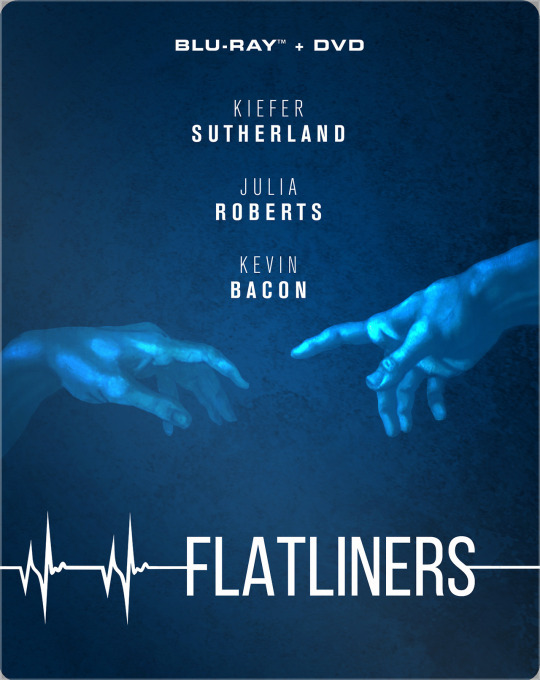
While the reboot of Flatliners proved to be dead on arrival, the 1990 original still has some life in it. Mill Creek Entertainment makes its first foray into the SteelBook market with a new Blu-ray/DVD combo pack release of the film, complete with sleek, The Creation of Adam-inspired artwork. The high-definition presentation is the same (descent) transfer from previous releases, and no special features are included.
In the film, ambitious-to-a-fault medical student Nelson Wright (Kiefer Sutherland, The Lost Boys) convinces four of his brightest classmates - pragmatic atheist David Labraccio (Kevin Bacon, Tremors), the brooding Rachel Mannus (Julia Roberts, Pretty Woman), womanizer Joe Hurley (William Baldwin, Backdraft), and the bookish Randy Steckle (Oliver Platt, Chicago Med) - to assist him in a reckless, unsanctioned experiment.

With the aid of his friends, Nelson is clinically dead for one minute "to see if there's anything out there beyond death" before they revive him. It miraculously works, leading them to attempt to outdo one another by going longer and longer before being revived. Although they return in fine physical health, they begin to suffer from nightmarish visions in which their pasts literally come back to haunt them.
While the reboot adopts a glossy, modern science fiction aesthetic, the original Flatliners is a visually dark picture with some grit to it. Joel Schumacher (The Lost Boys, Batman Forever) brings the stylish visuals with which he has become synonymous to the medical school’s gothic architecture. He and cinematographer Jan de Bont (Die Hard, The Hunt for Red October) use neon blue lighting as a bad omen, while warm colors are reserved for happier times.

The simple yet intriguing premise comes courtesy of Peter Filardi's (The Craft) well-researched script. The story becomes a tad redundant, but interest is retained in wanting to see each person's glimpse at the afterlife, as it proves to be different for everyone. The genre elements are strong in the strange visions they experience once revived, bringing to mind A Nightmare on Elm Street at times, but it also has its fair share of drama and a rather uplifting message.
All five actors that make up the ensemble cast were right around the primes of their career, so it's exciting to watch them share the screen. While he's not on camera, Michael Douglas served as a producer on the project. The score, composed by James Newton Howard (The Hunger Games, The Sixth Sense), traverses between the film's exploration of beauty and horror in the afterlife.
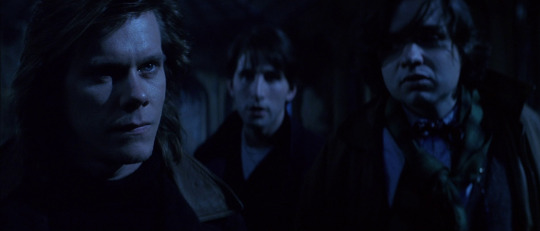
It's unfortunate that the release of a remake didn't yield new special features for Flatliners, but Mill Creek's SteelBook release is a nice consolation prize. Despite it’s star-studded cast, the film is not a classic even by genre standards, but it's not difficult to see why Sony and Columbia believed in a remake: its plot remains compelling and potent for exploration.
Flatliners is available now on SteelBook Blu-ray/DVD via Mill Creek Entertainment.
#flatliners#kiefer sutherland#kevin bacon#julia roberts#william baldwin#review#dvd#steelbook#article
17 notes
·
View notes